Likes
- Exquisite design
- V8 powertrain is incredible
- Ummm…
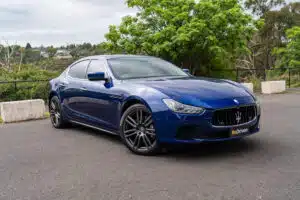





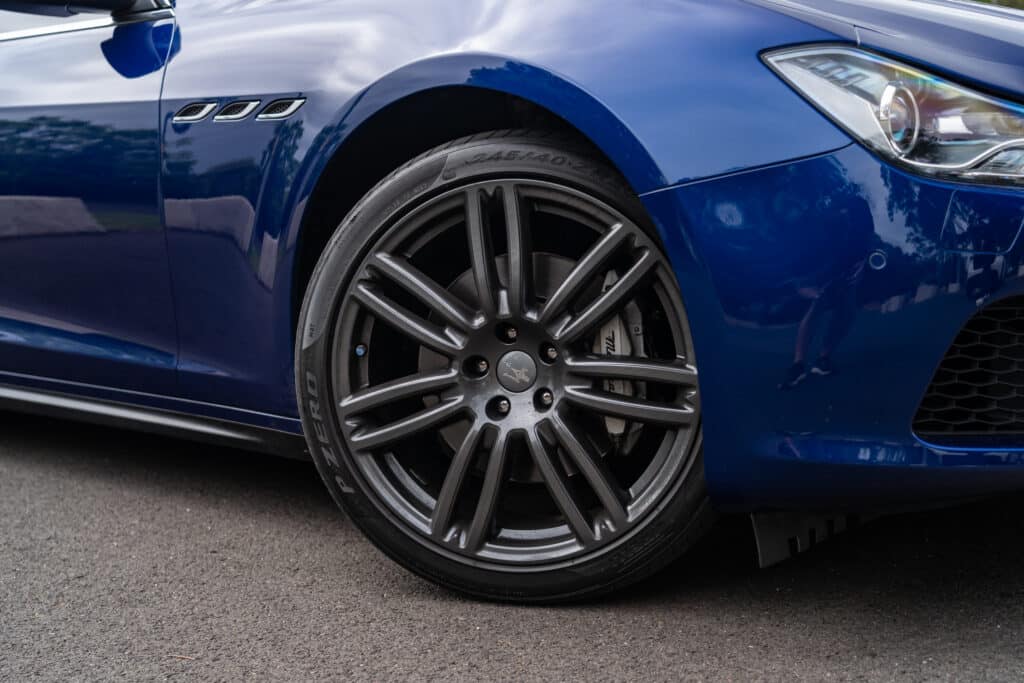


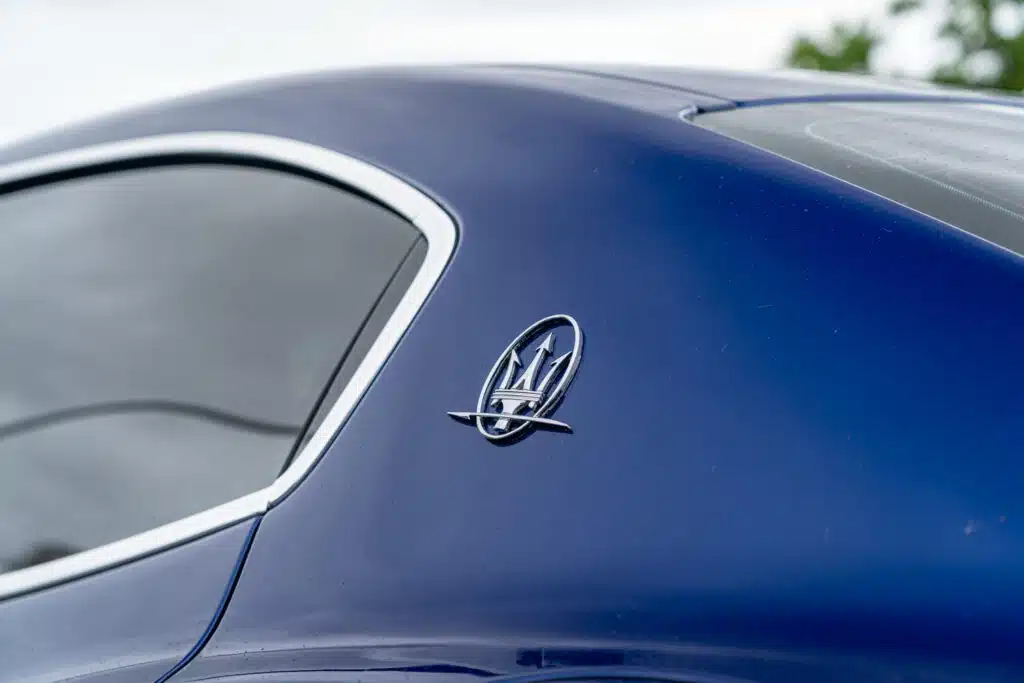
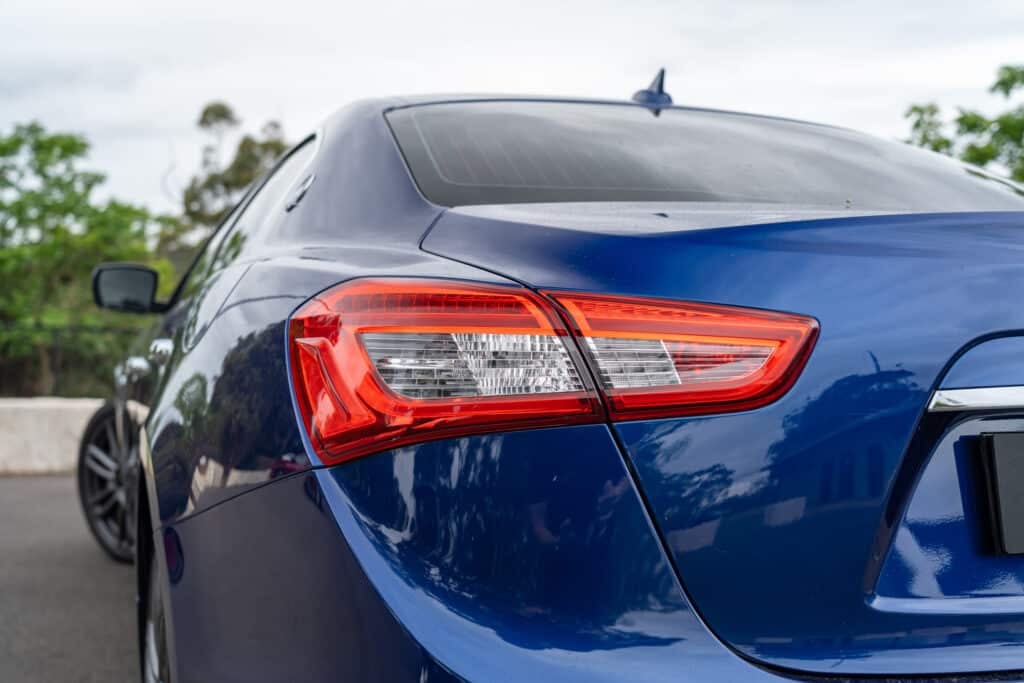
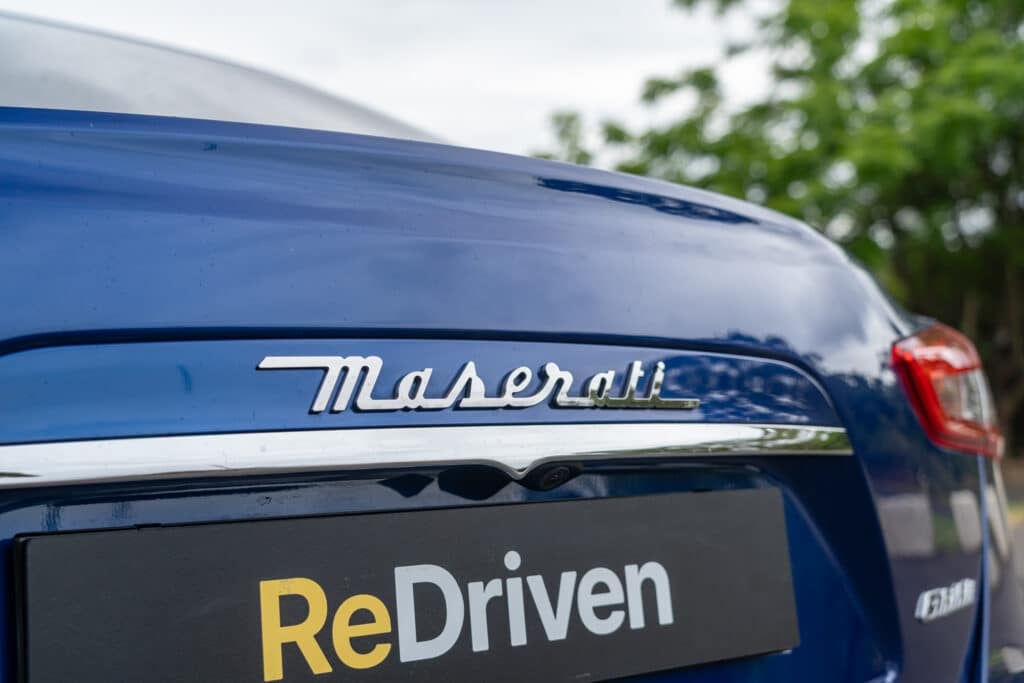
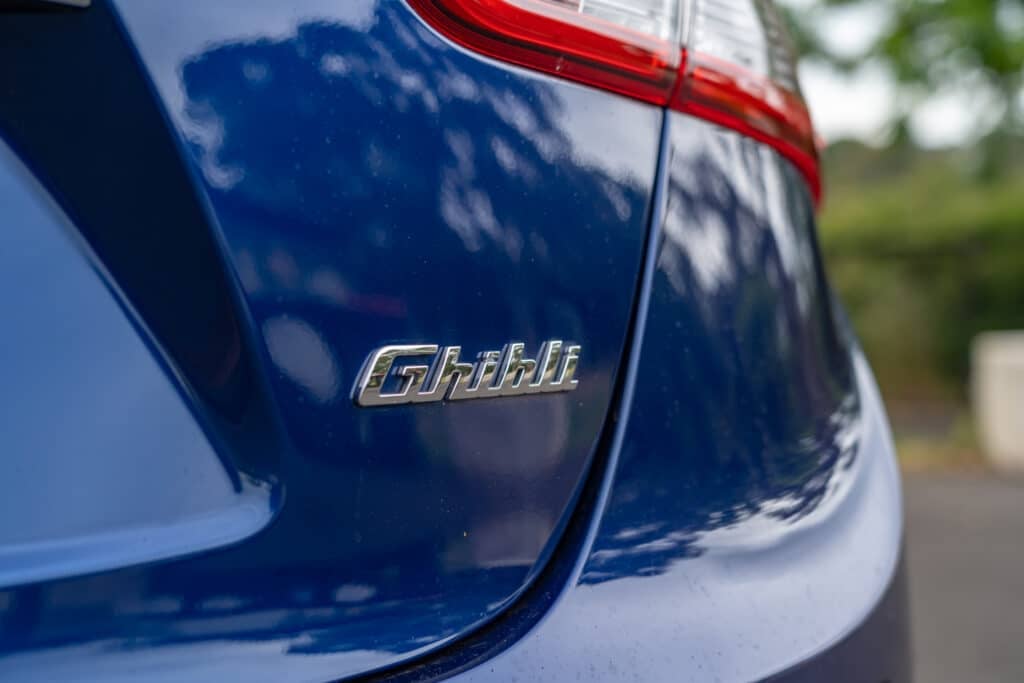

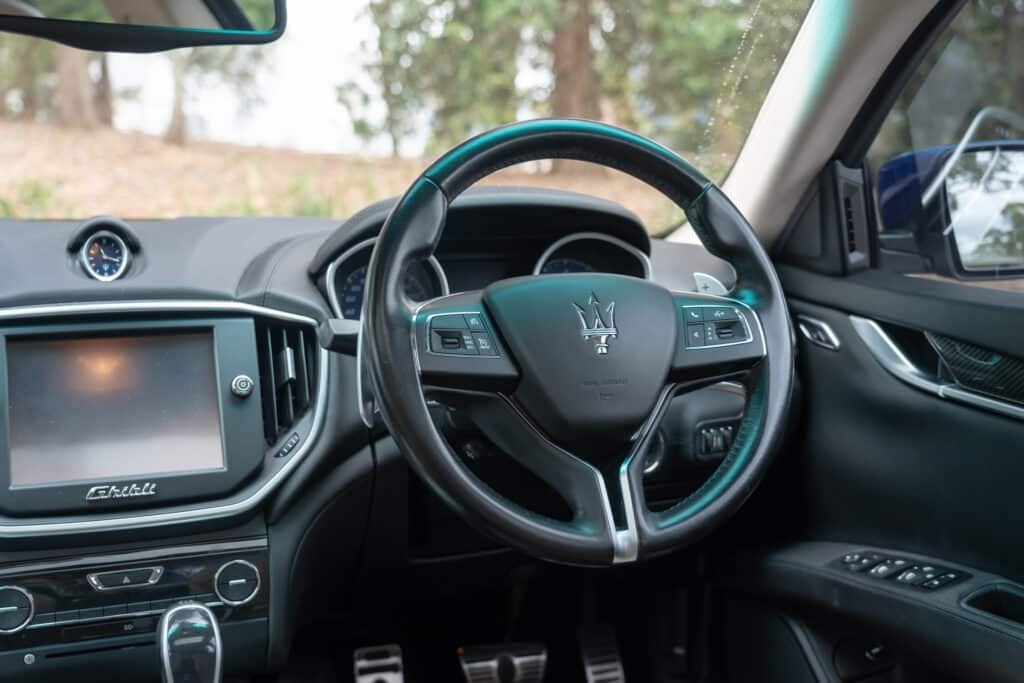

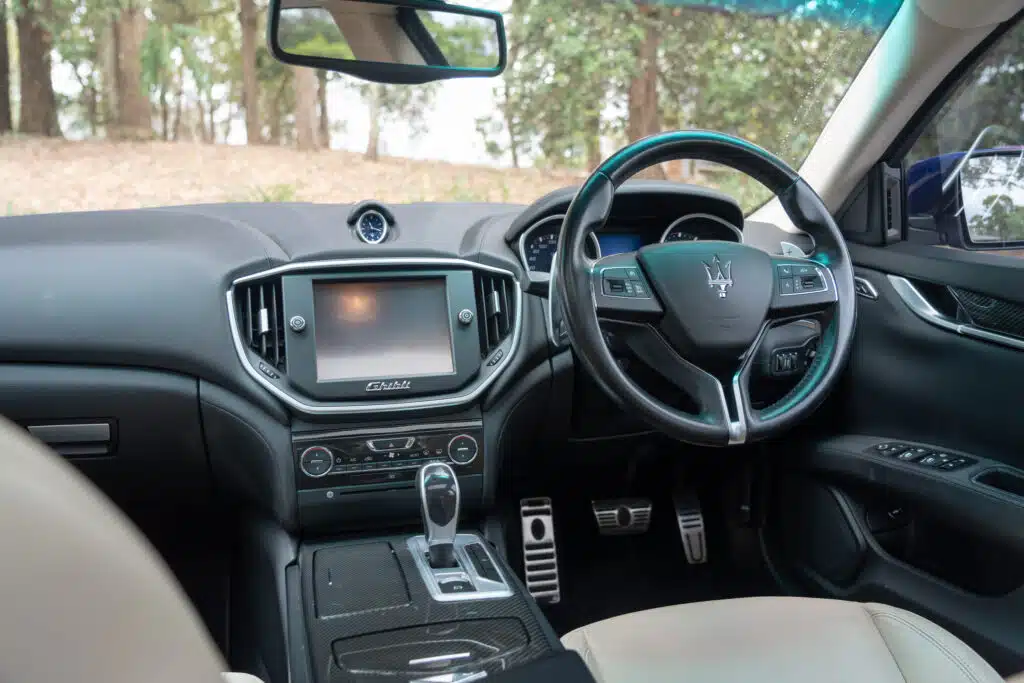
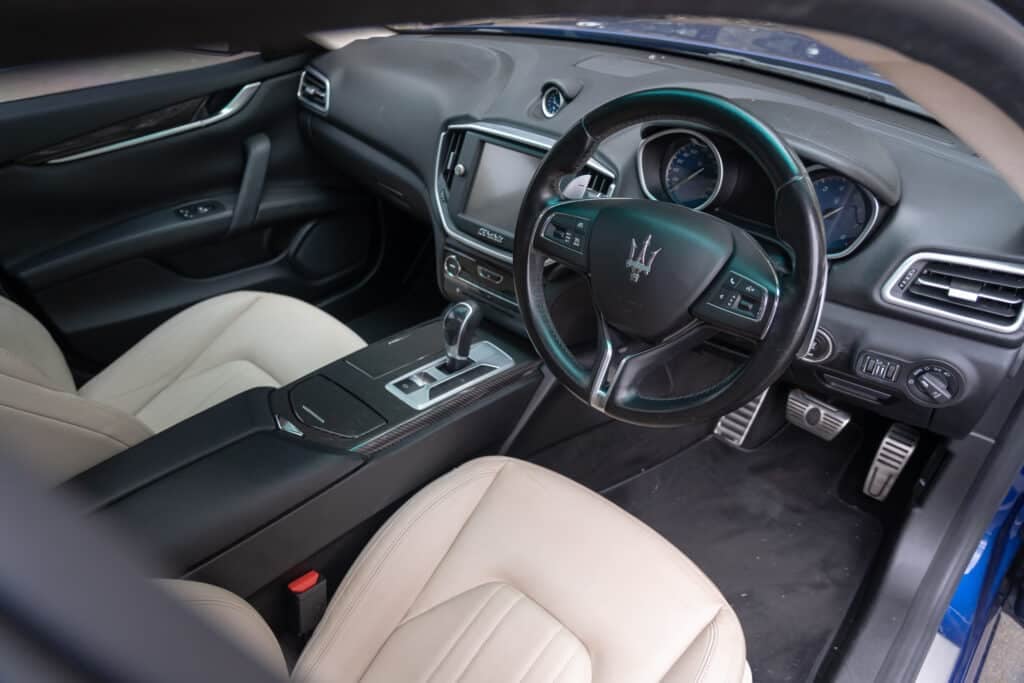


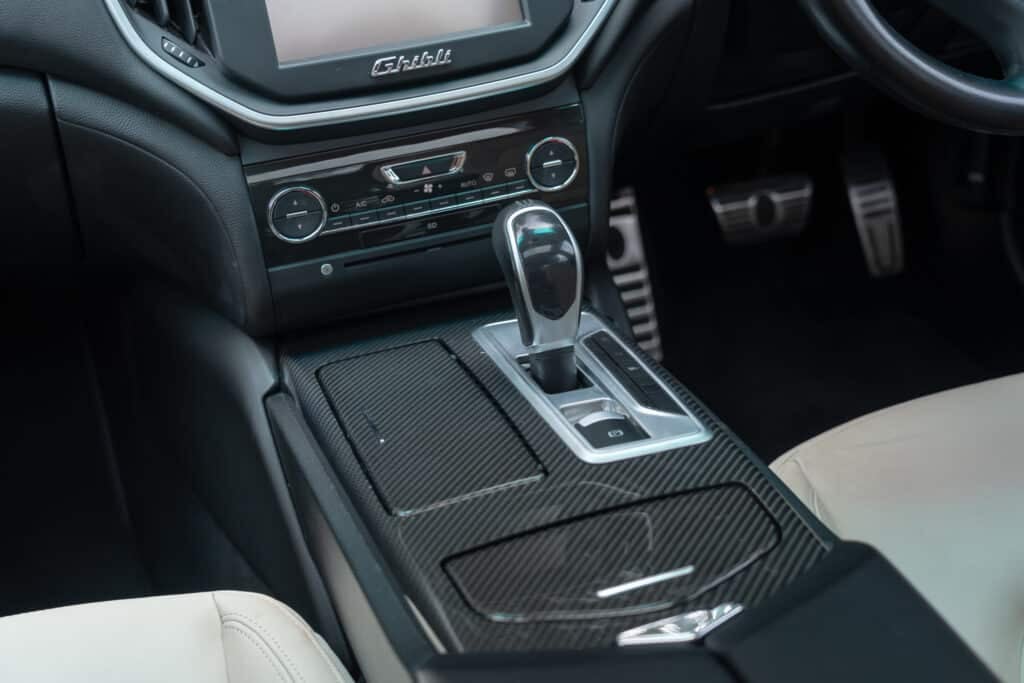
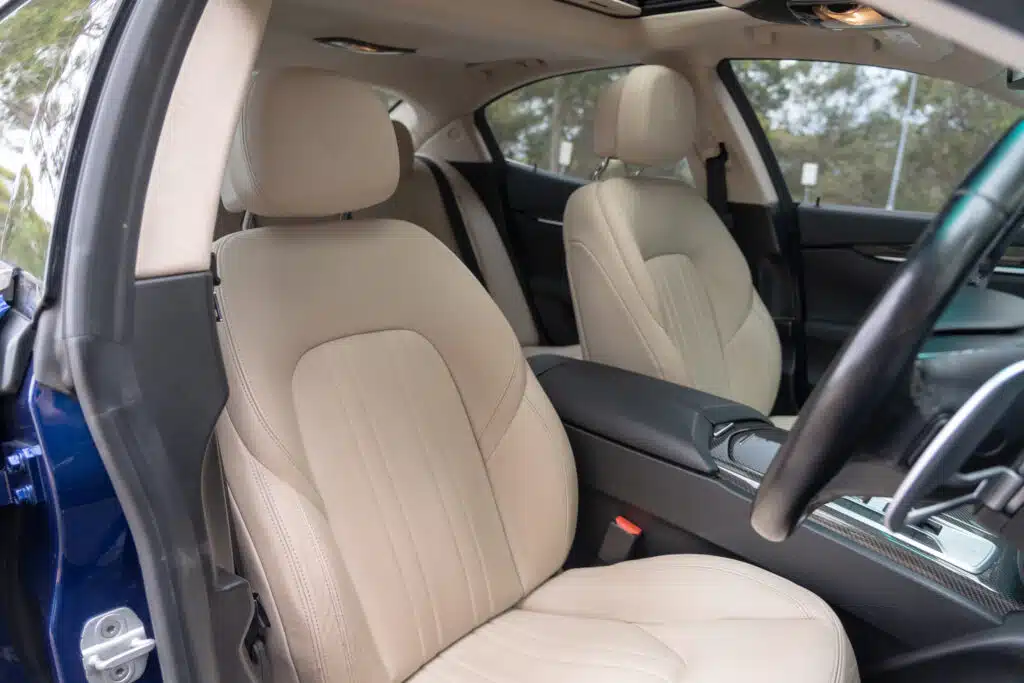

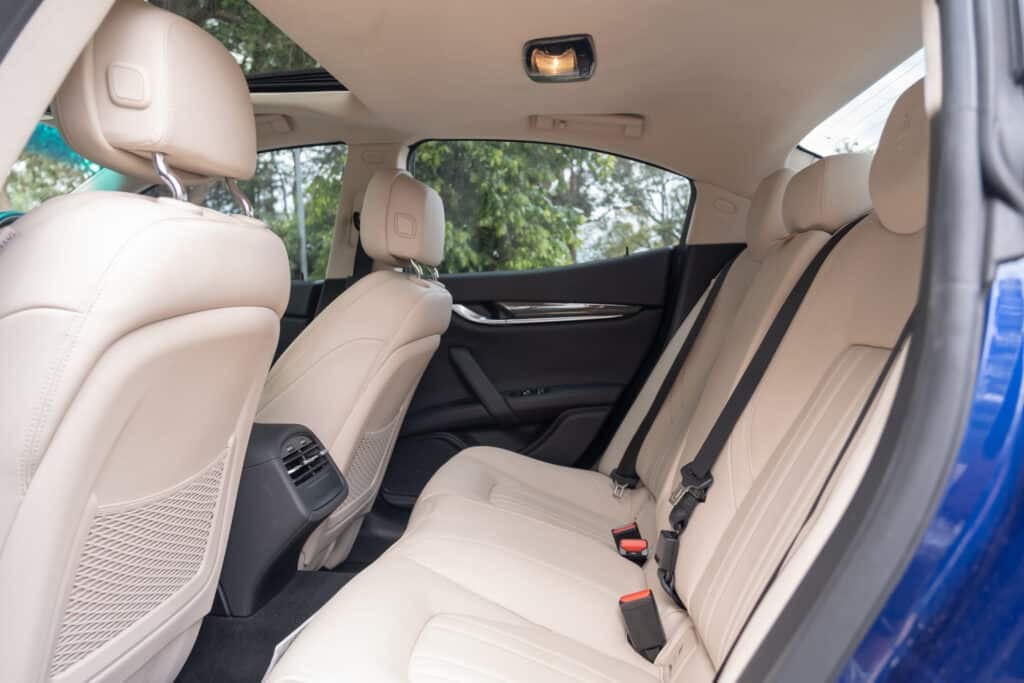
The Maserati Ghibli (M157) is the Italian answer to entry-level executive sedans, typically dominated by German brands such as the Audi A4, BMW 3-Series, and Mercedes-Benz C-Class. The Ghibli takes the same principles of these sedans, adding a dash of Italian ‘flair’ to the mix, much like its larger counterpart, the Maserati Quattroporte.
For the Australian market, the Ghibli came in two iterations: pre-facelift models (M157.I) ran from 2014 to 2016, and the post-facelift (M157.II), which ran from 2016 up until its final model year in 2023. Post-update models differentiate themselves with a slightly revised grille/front fascia, different light design, cabin tech, and available trims/equipment packages.
Engines options included a 3.0L twin-turbocharged V6 (petrol), a 3.0L turbodiesel V6, a 2.0L turbocharged four-cylinder hybrid, and at the top of the range, a 3.8L twin-turbocharged petrol V8. All sent power to the rear wheels through an eight-speed automatic transmission – though in certain markets, all-wheel drive via Maserati’s ‘Q4’ system was available.
If you’re exploring used sedans in this segment and fall for the charm of the Italian badge, especially with how cheap they can be, should you follow what your heart desires or listen to your brain and avoid a Ghibli at all costs?
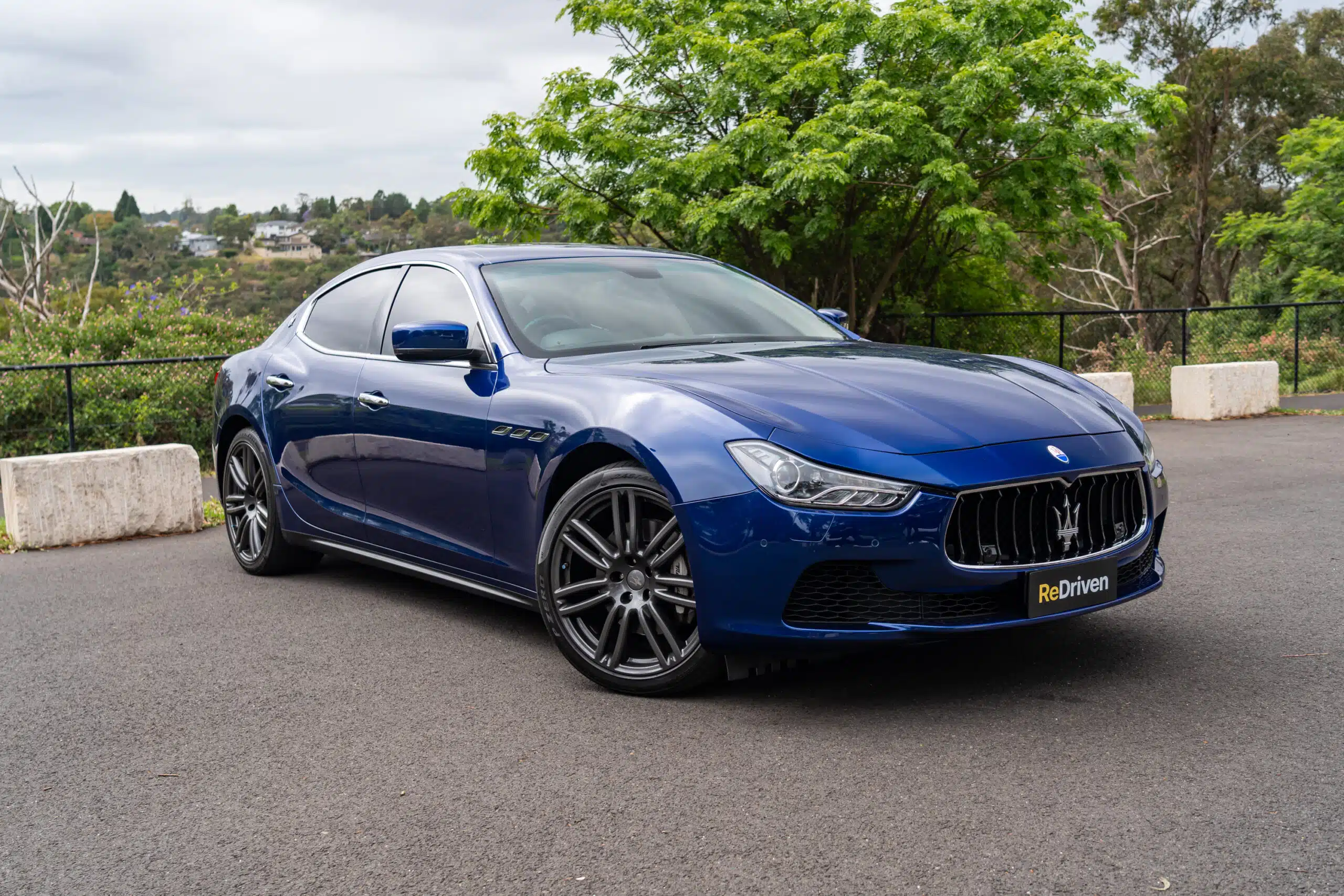
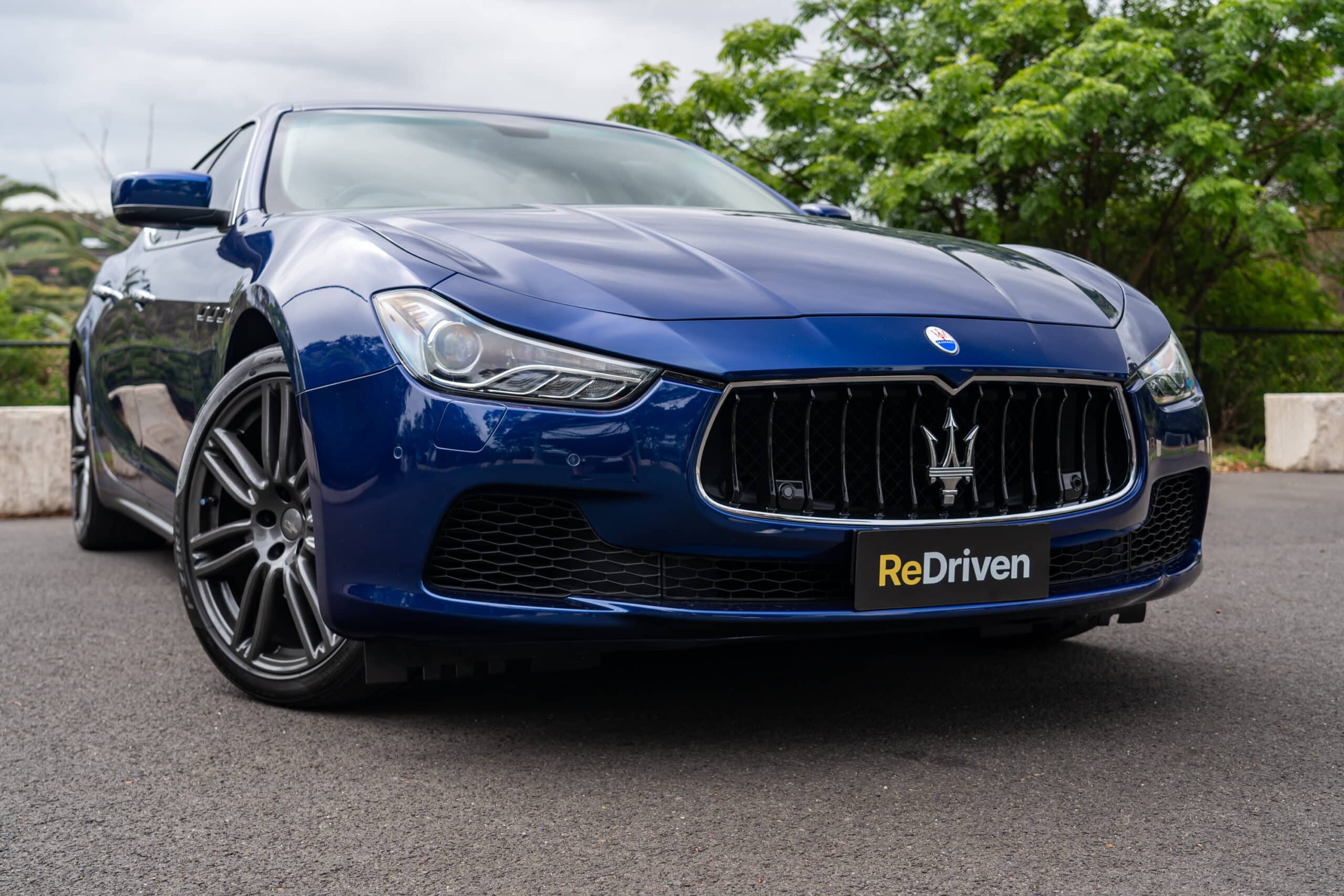
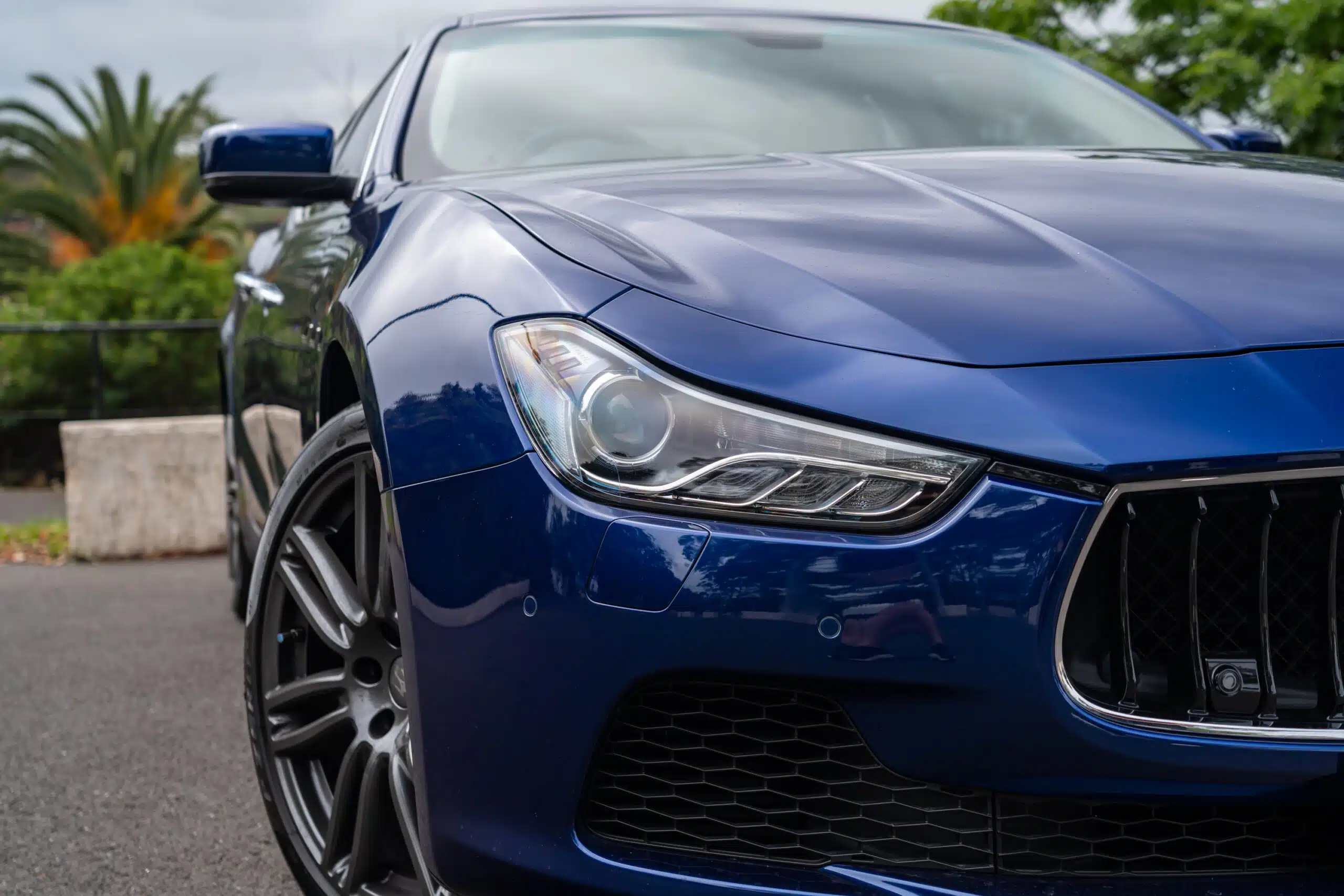
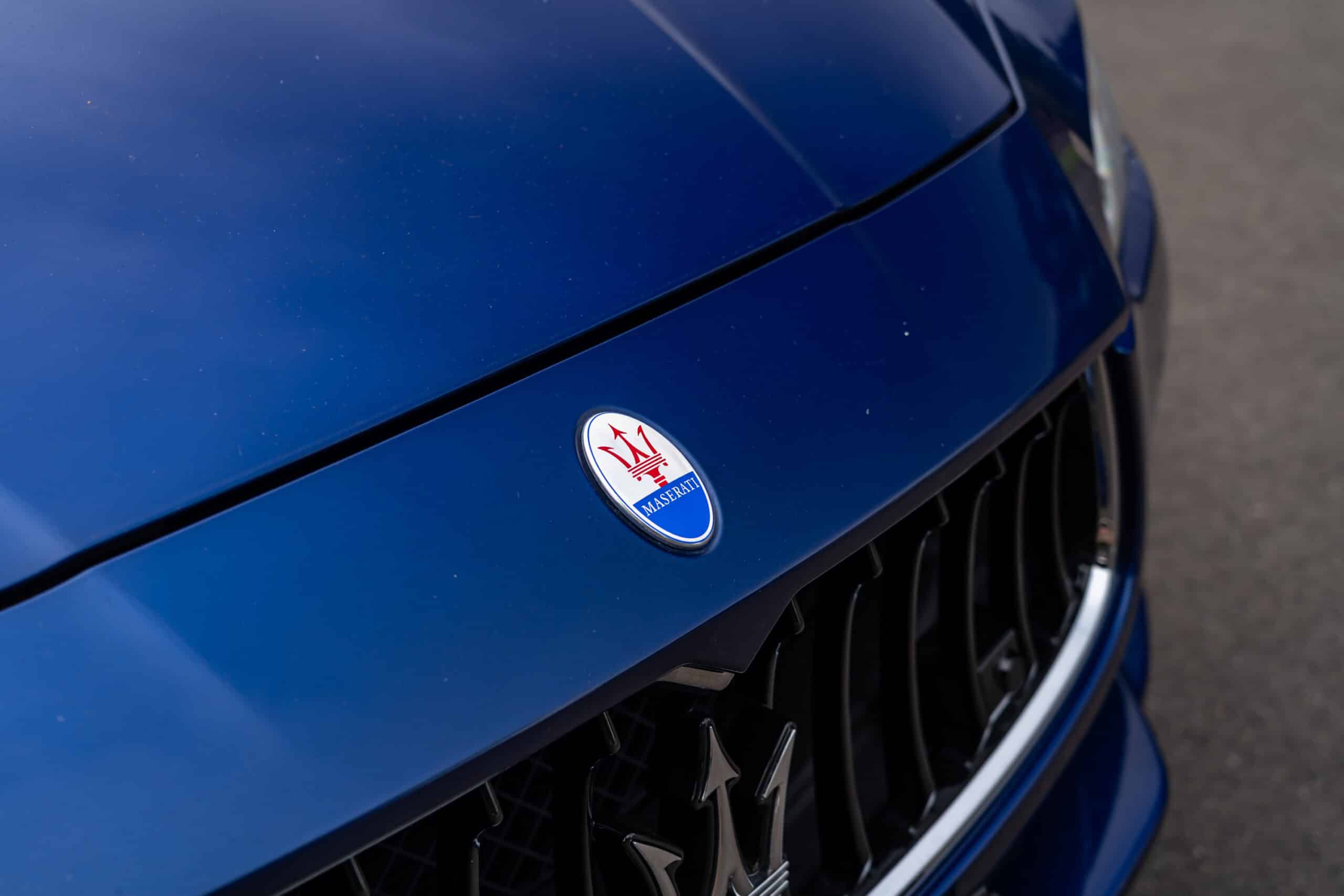

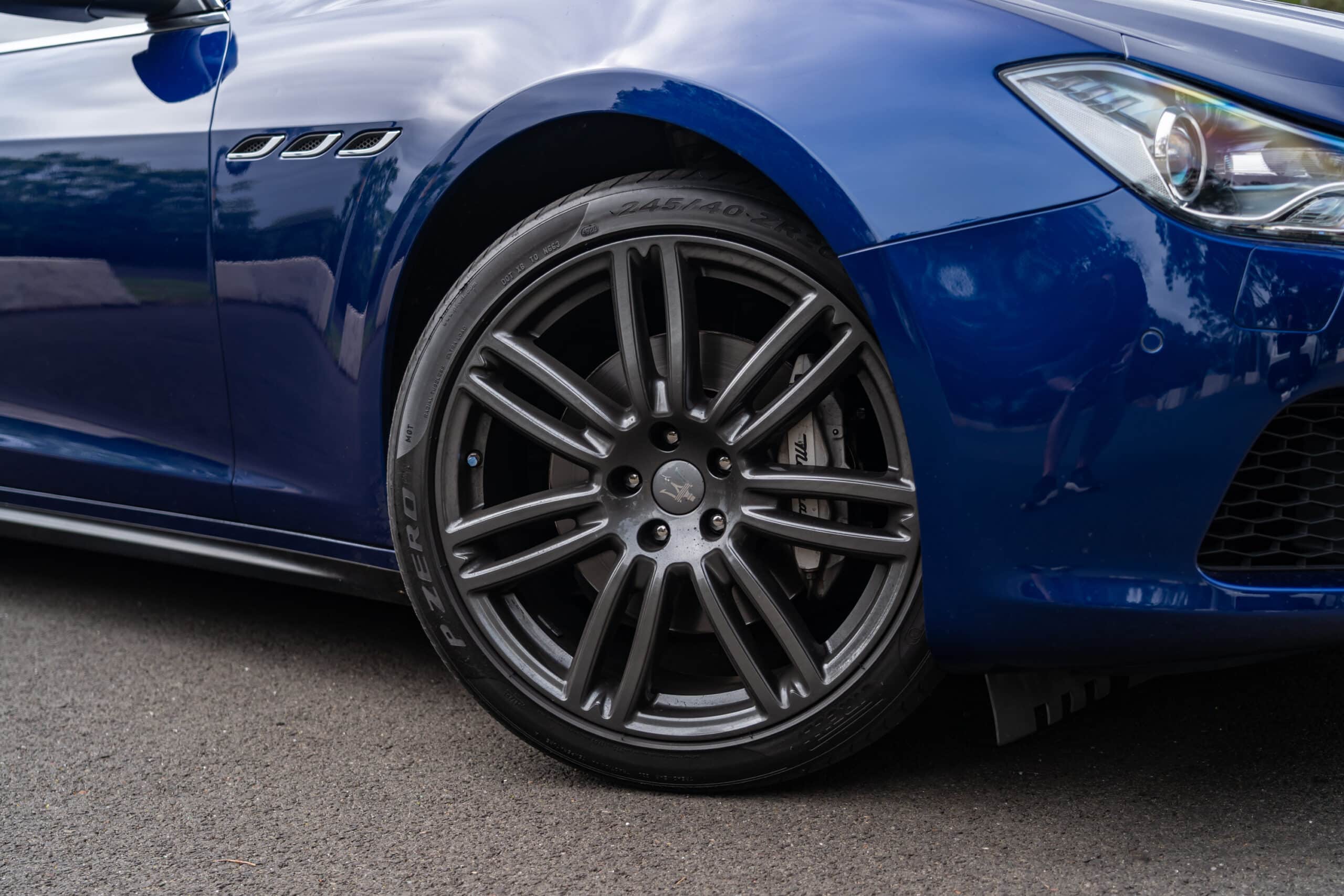
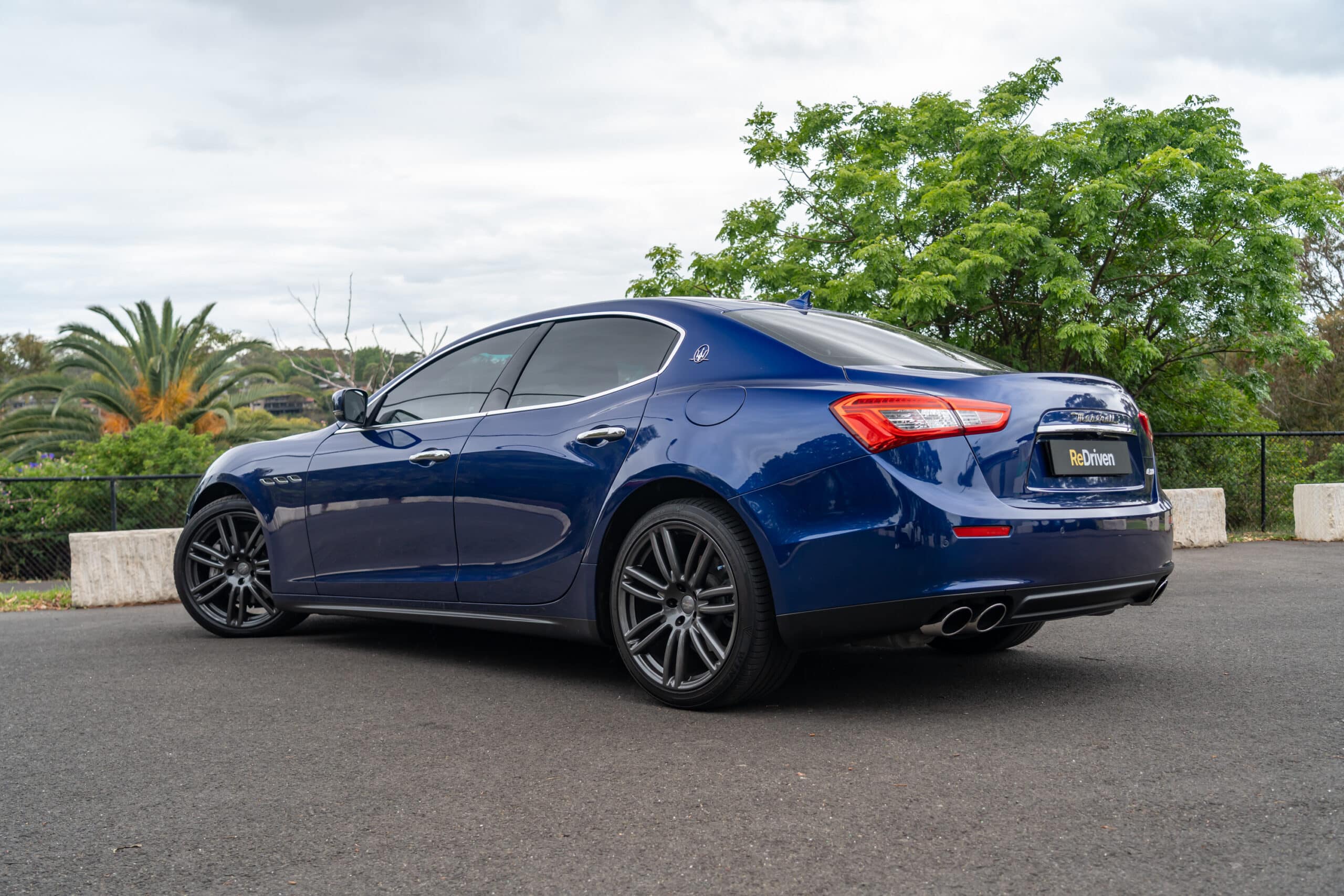
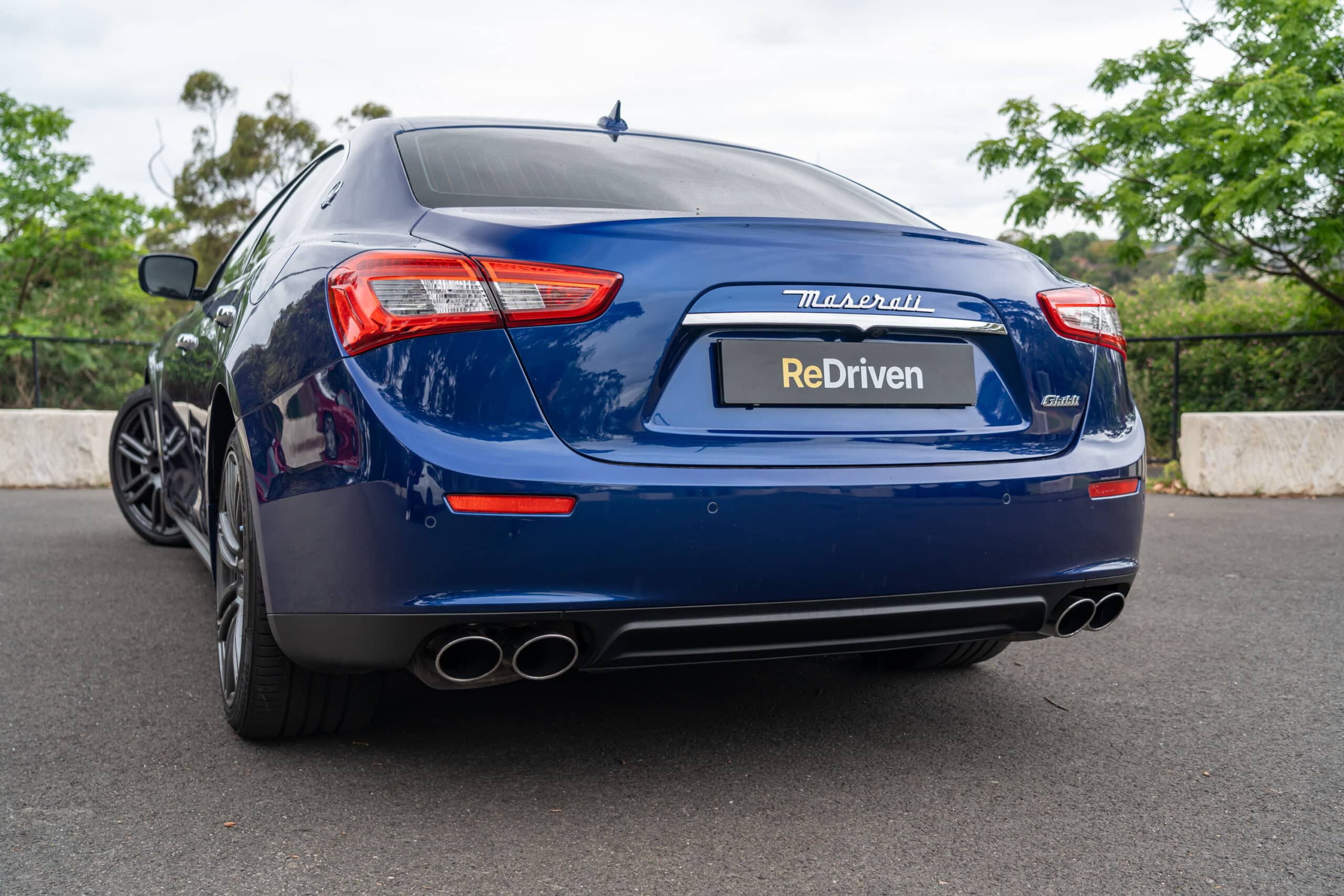
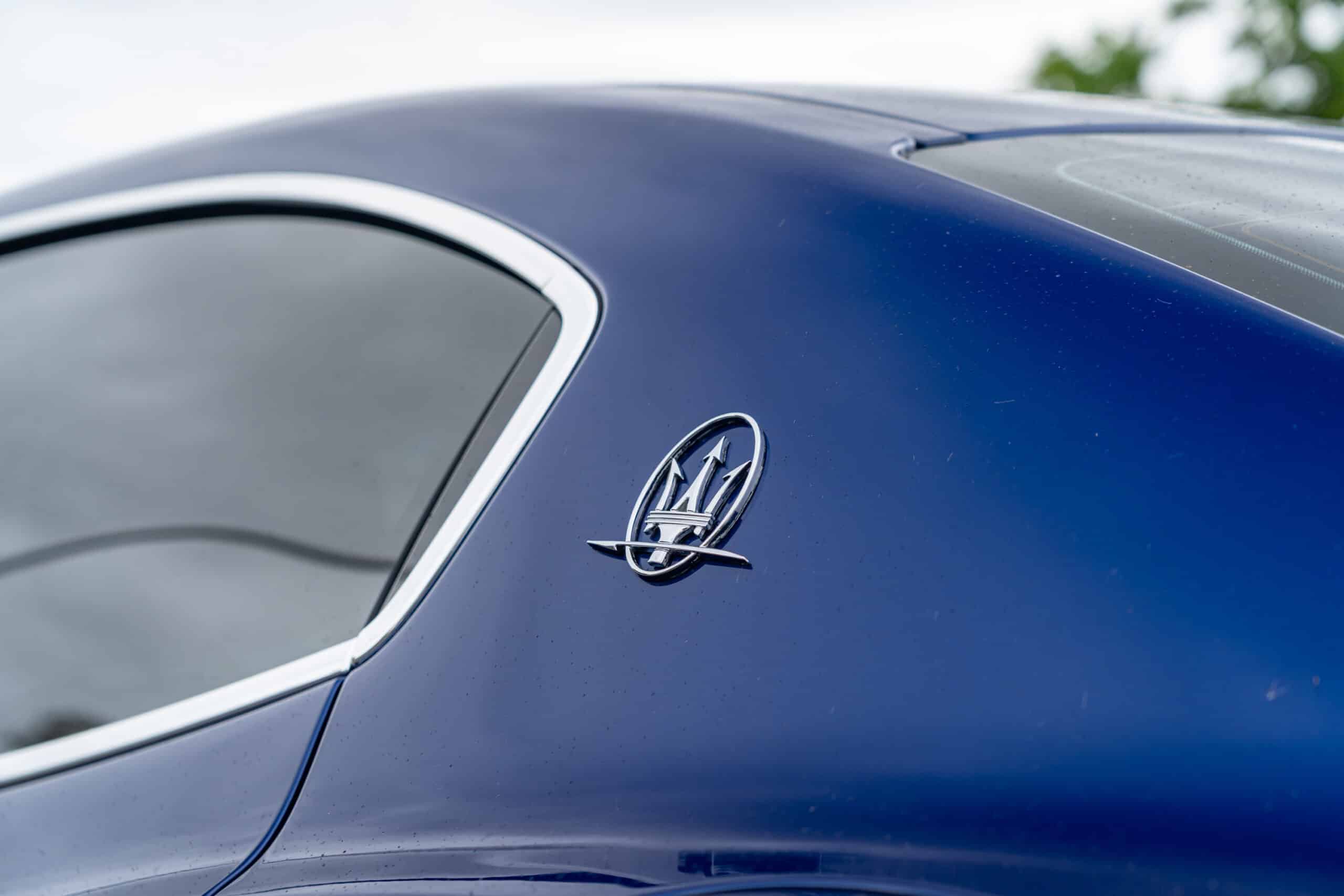
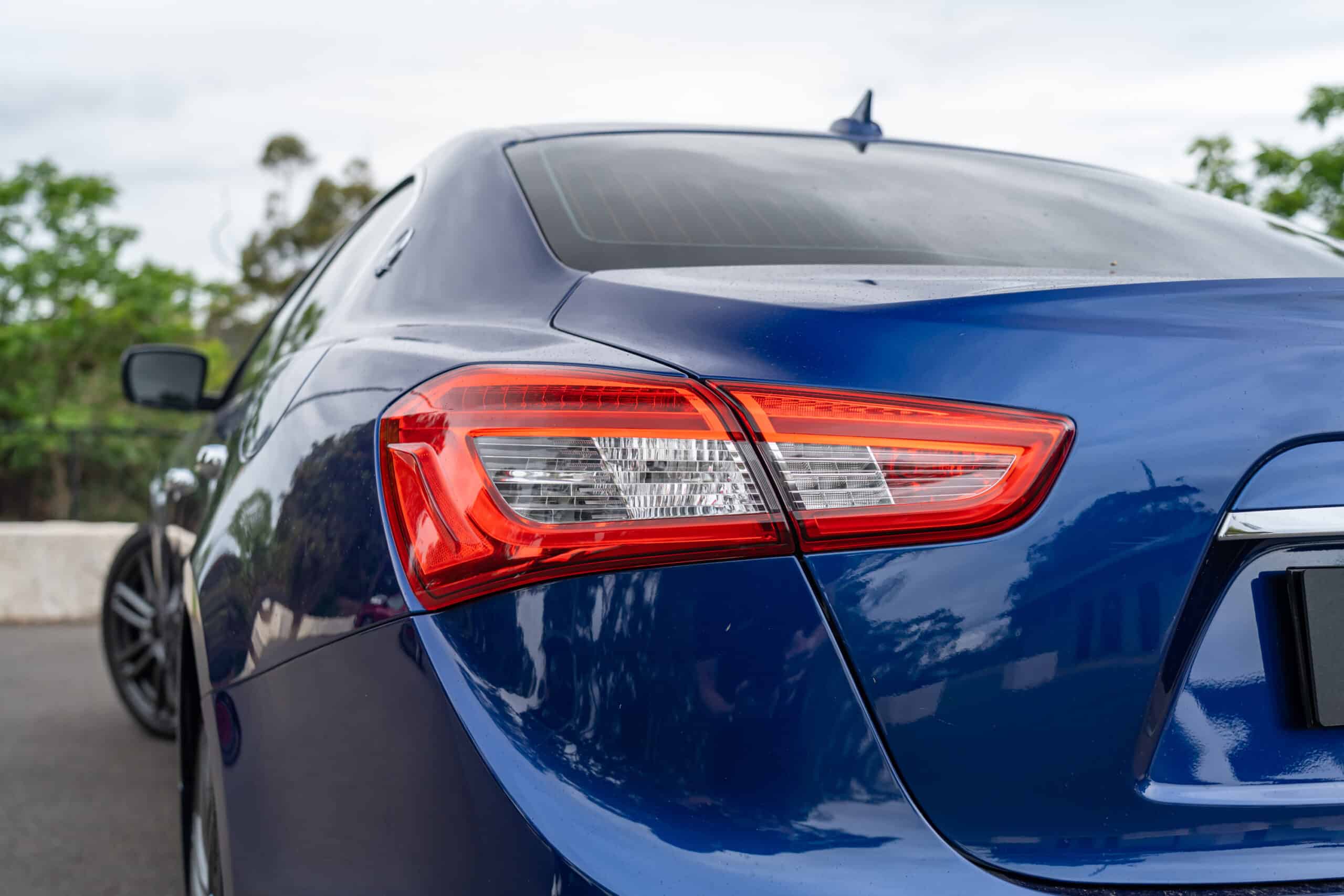
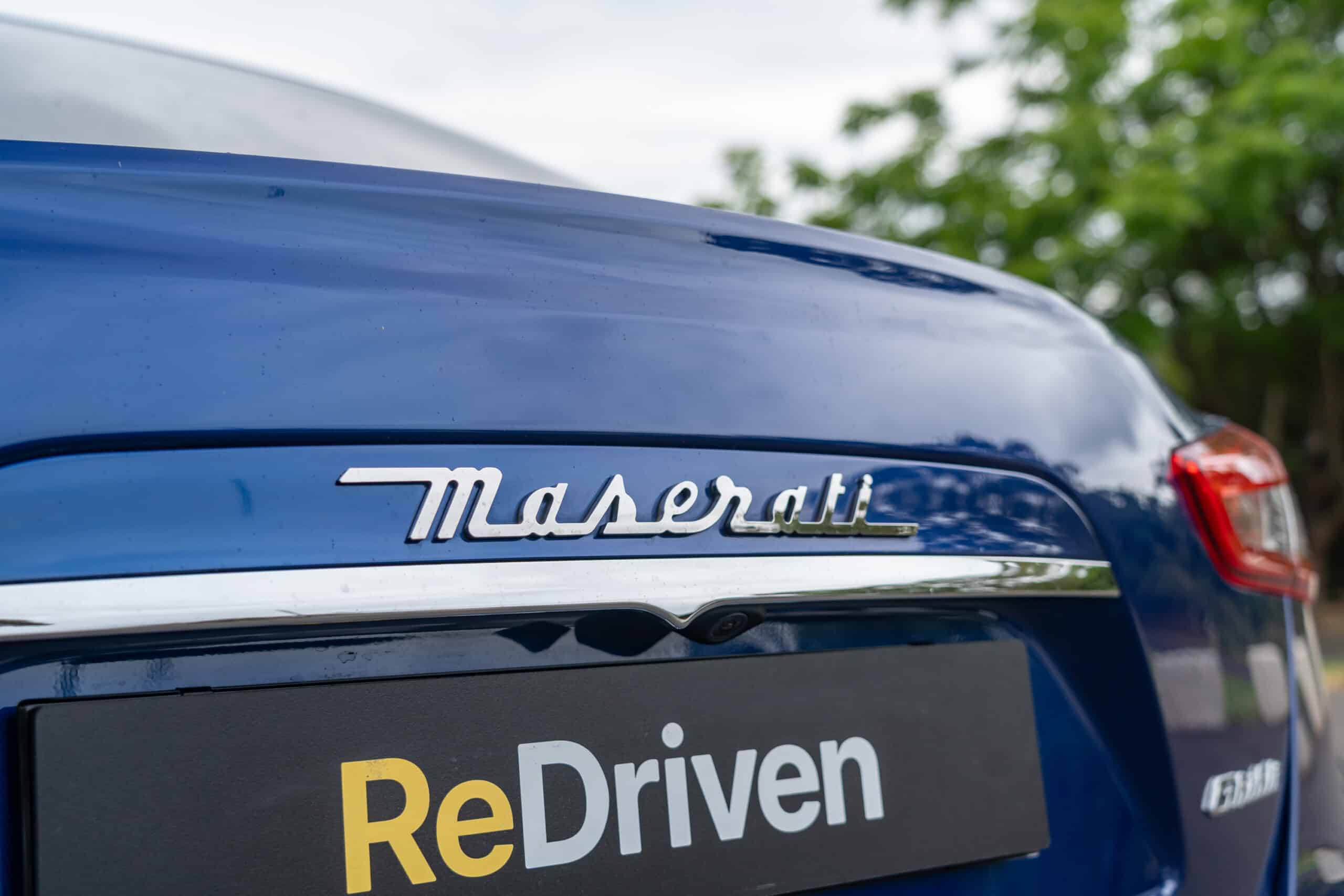
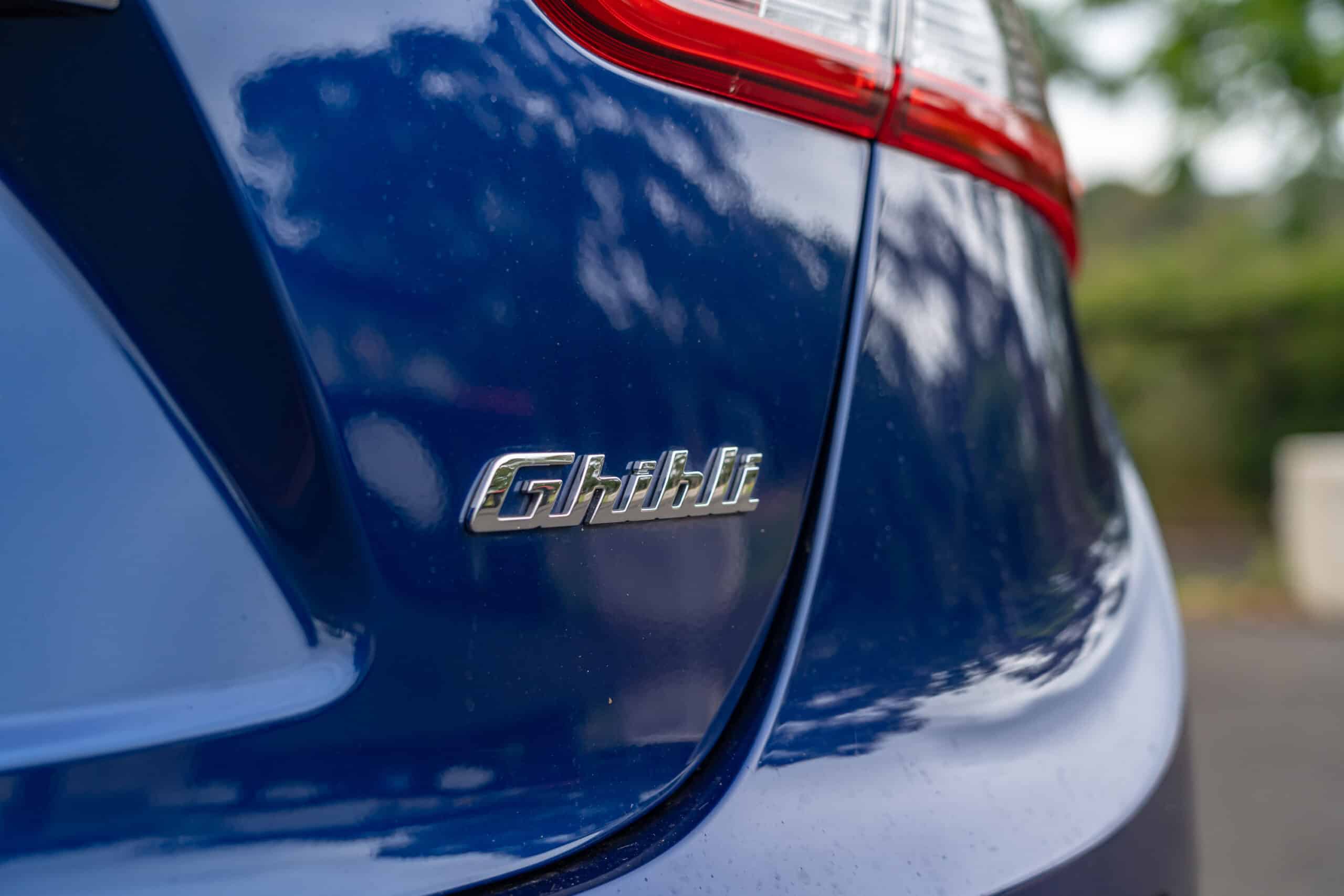
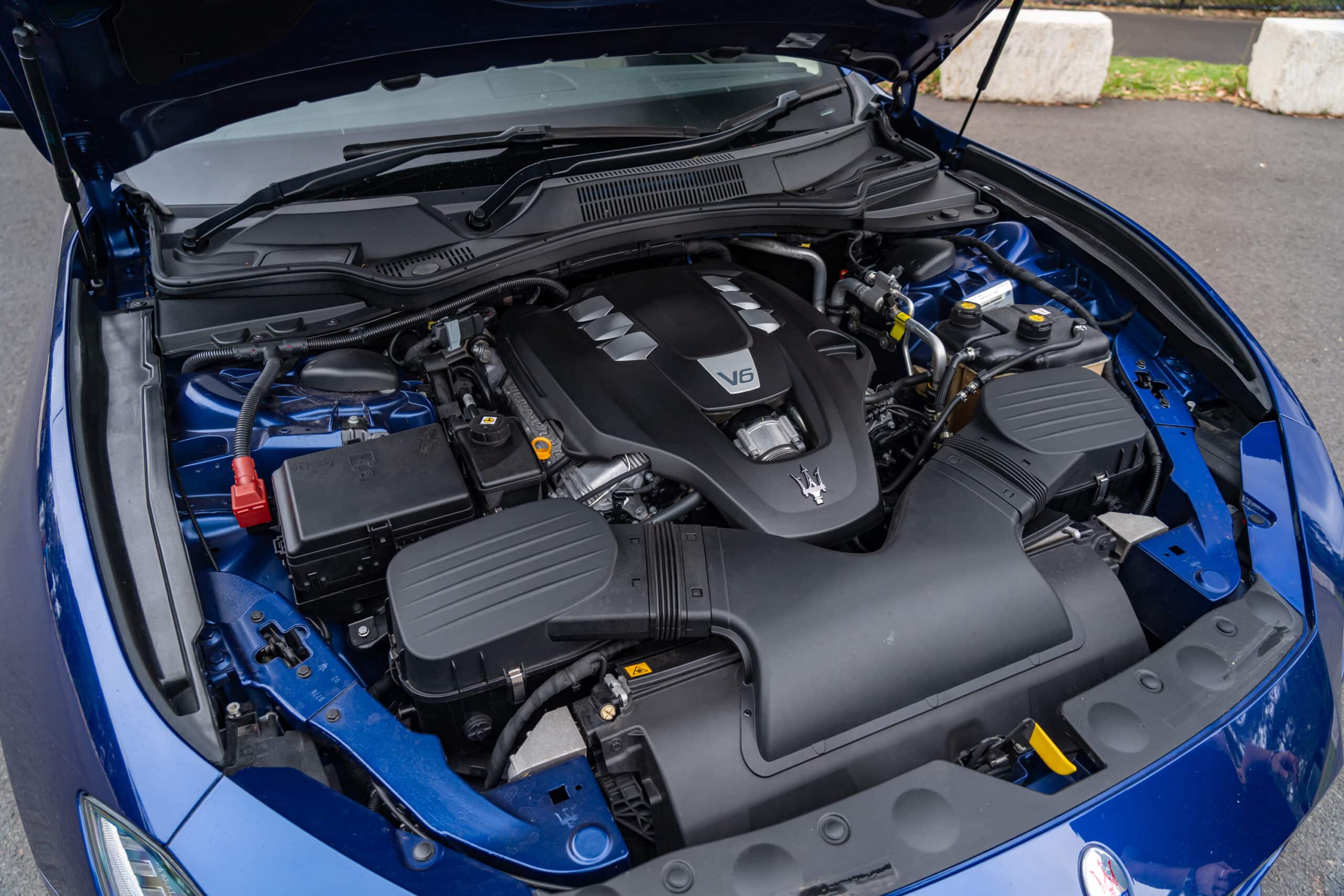
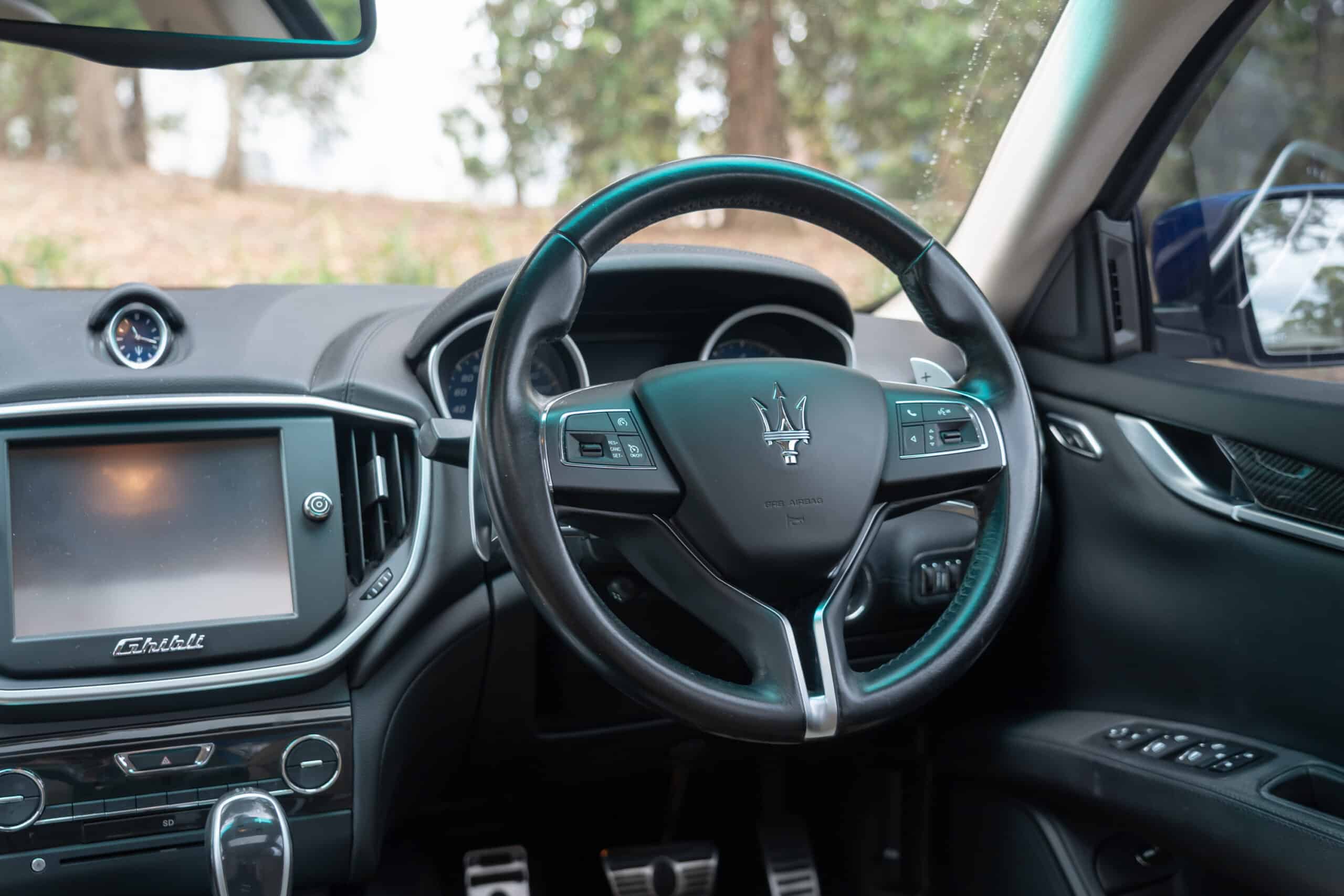
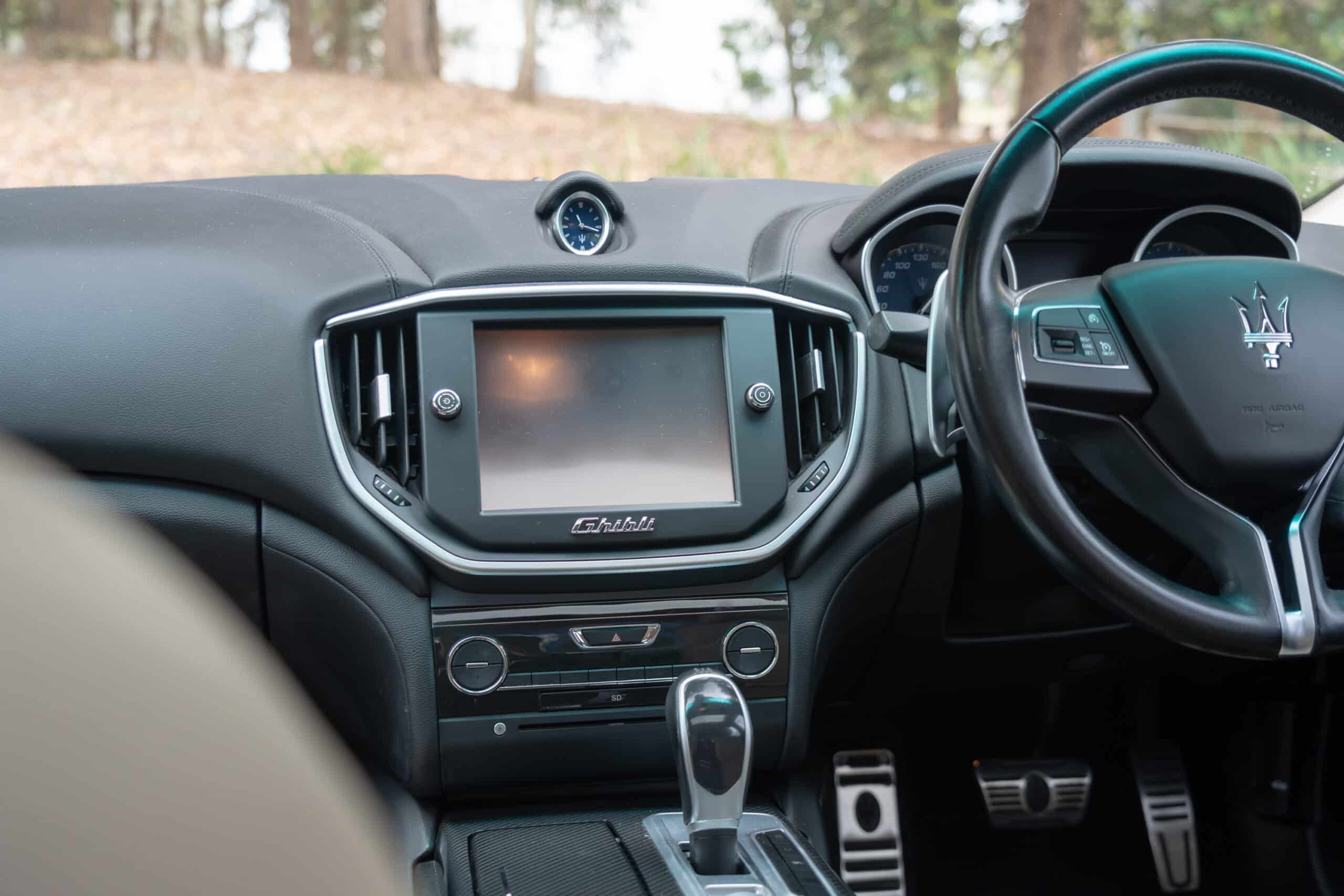
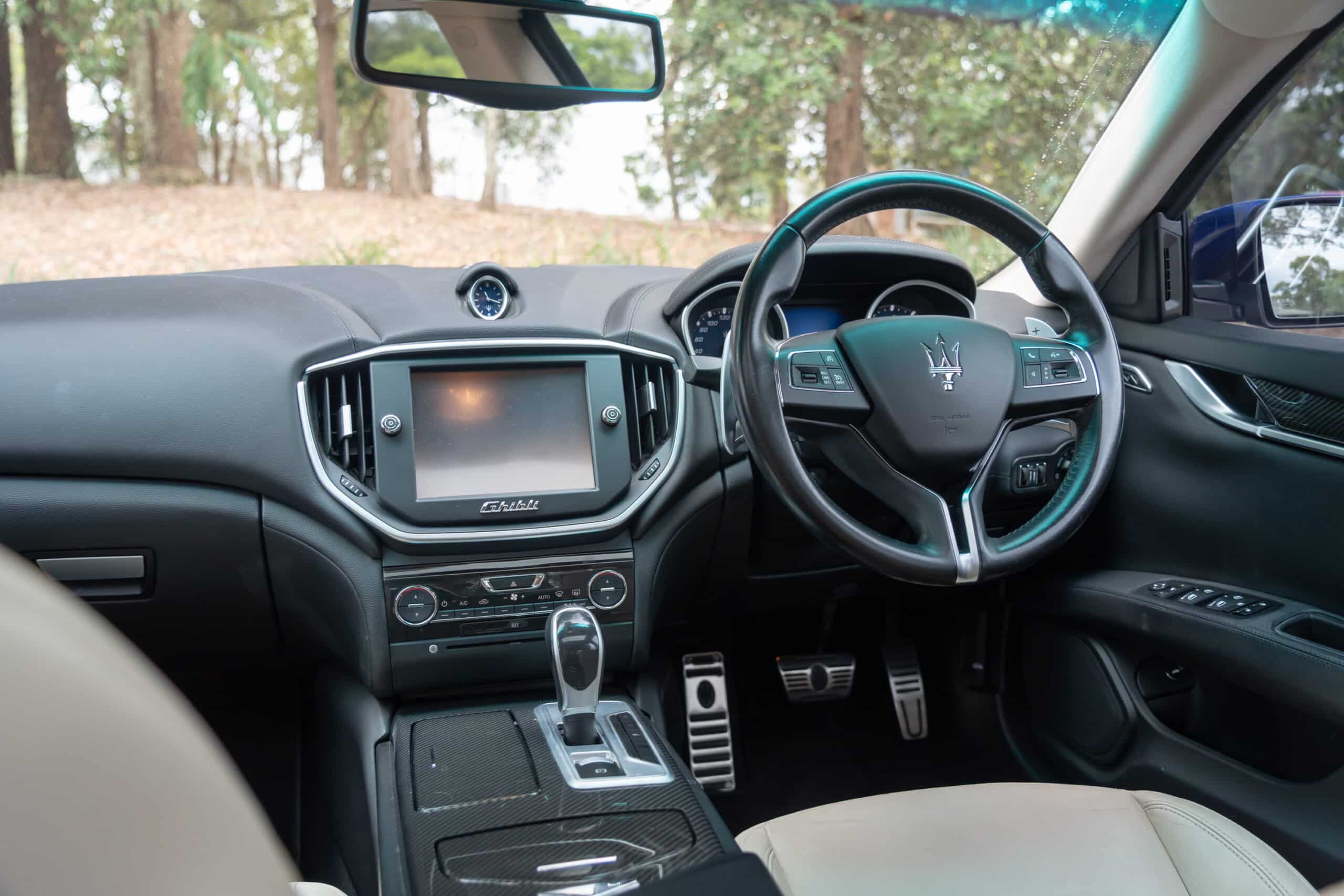



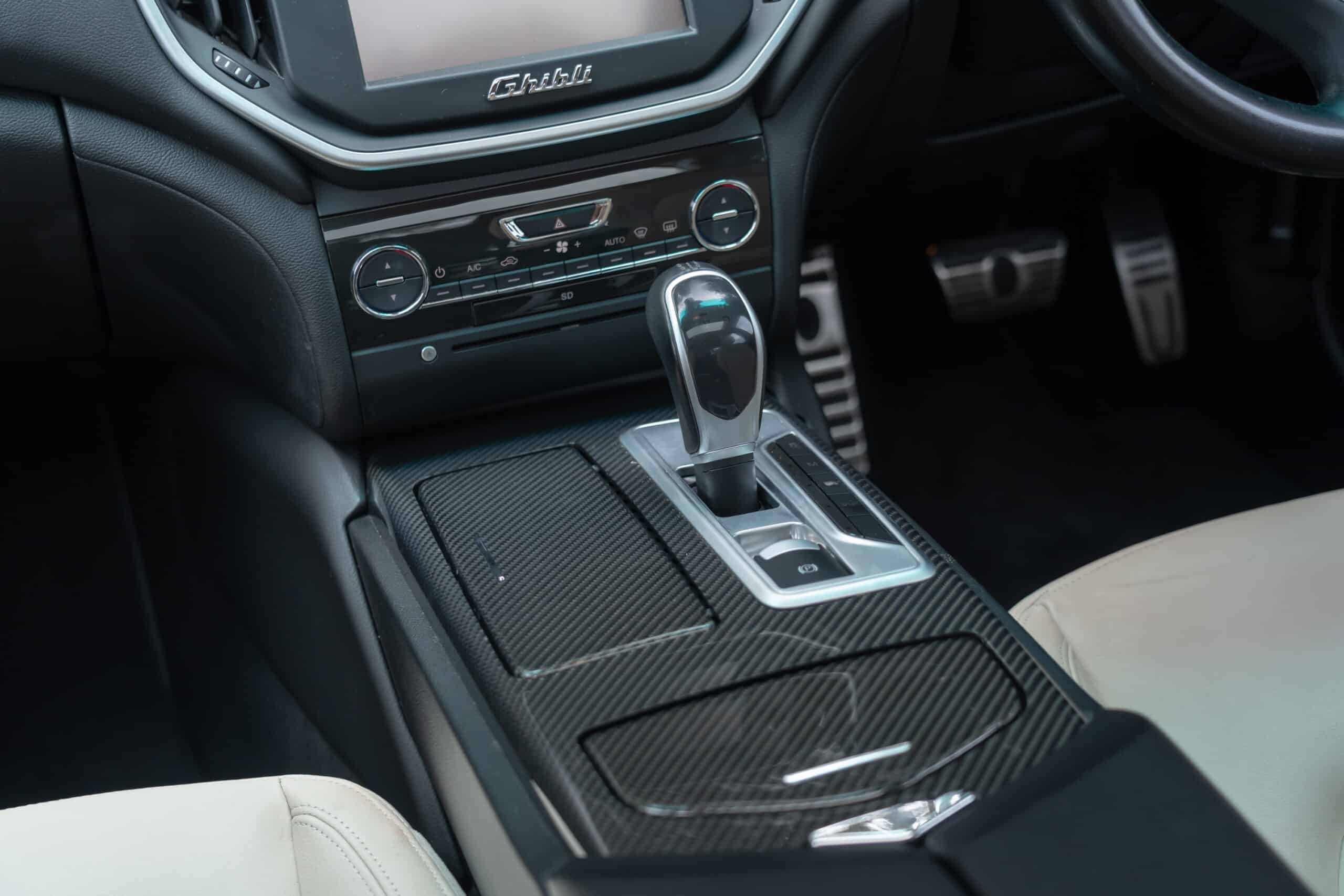
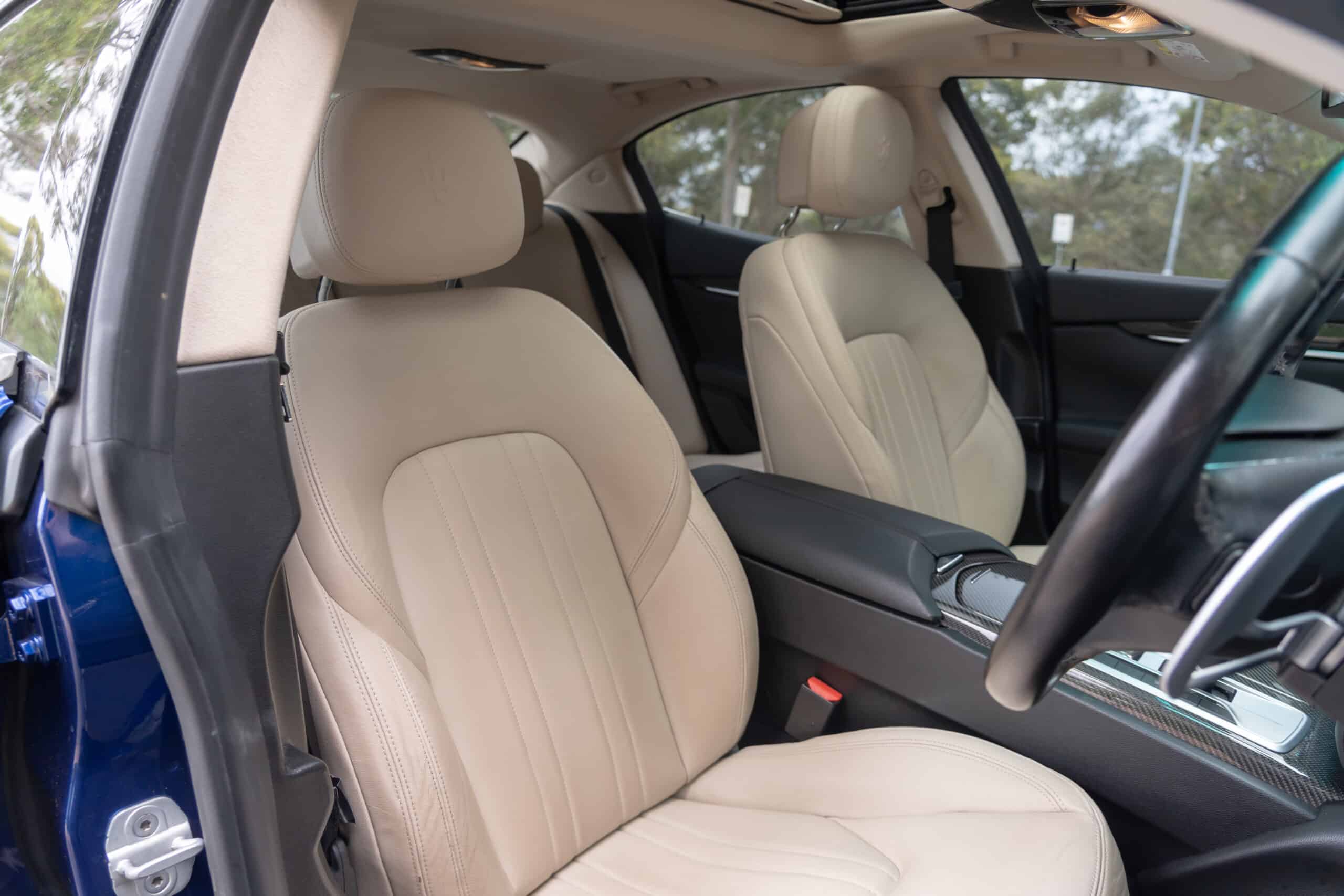
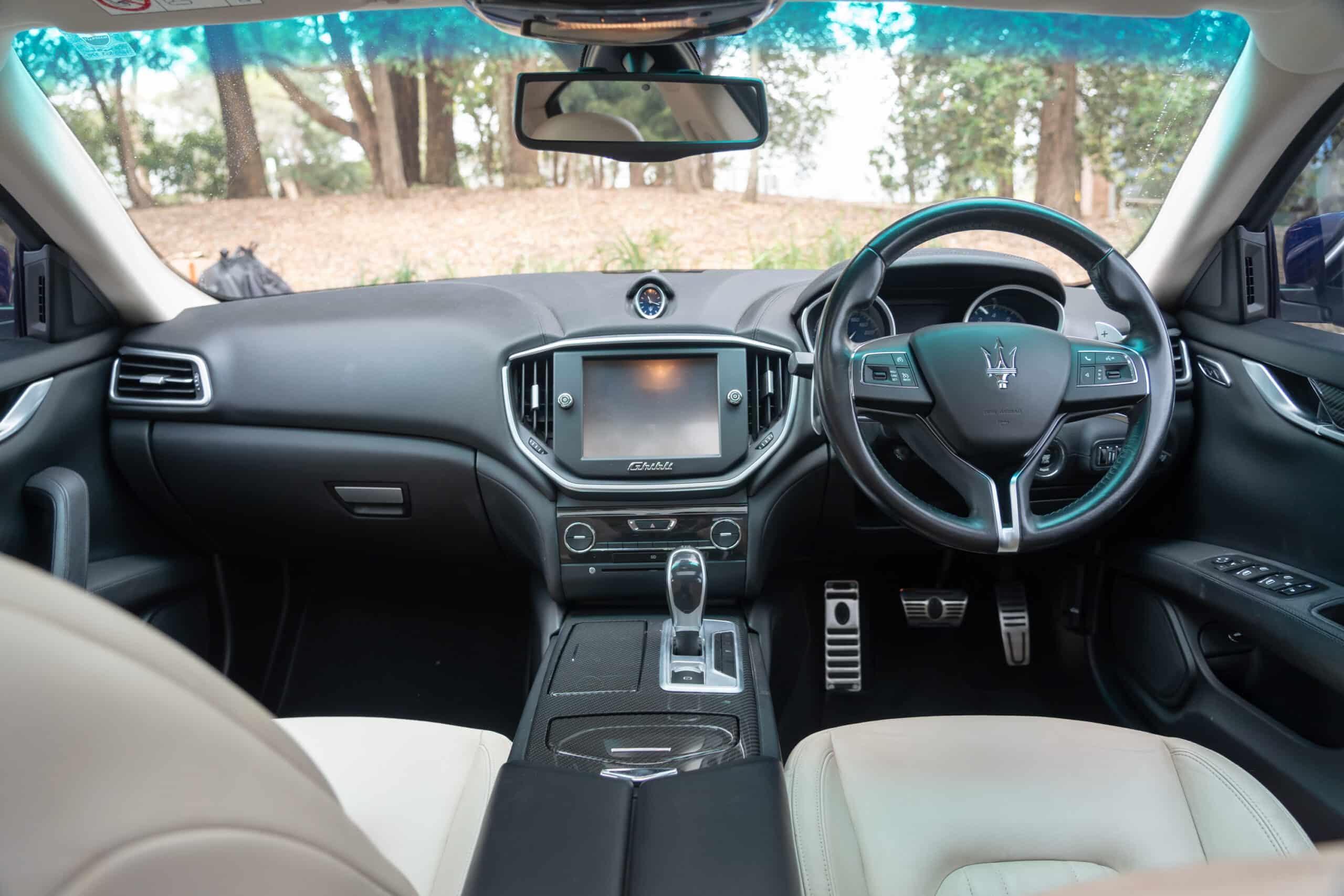
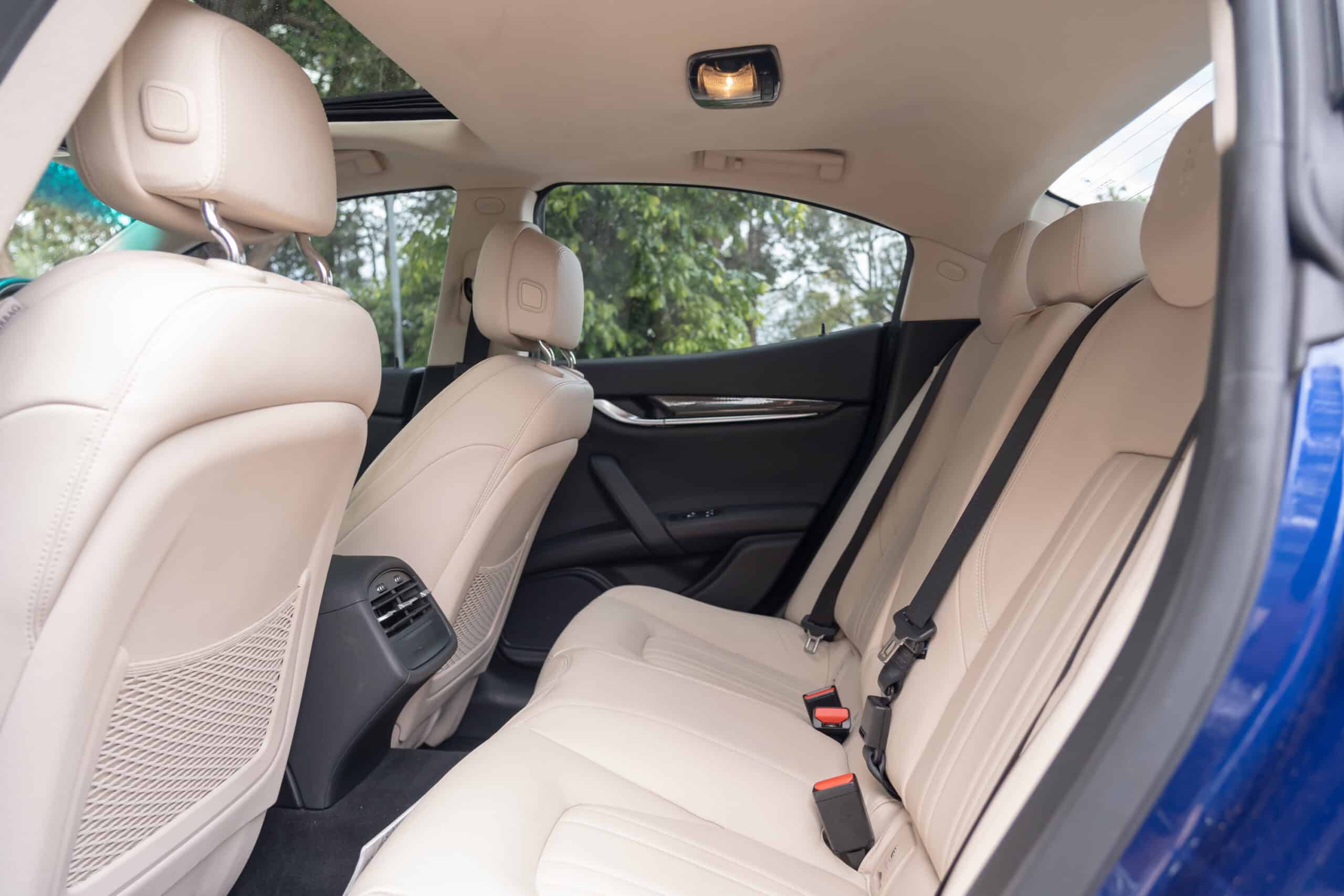























Exterior Issues:
The Ghibli wears the badge of one of the most recognisable luxurious Italian car brands, but it’s sad to say that the build quality of the exterior doesn’t exactly spell ‘premium’. Which is a shame, considering how beautifully they nailed the overall design.
A handful of owners report they have had various pieces of their Ghibli’s plastic exterior trim or sections hang loose or fall off completely. Plus, the overall fit and finish can be quite inconsistent – plenty of Ghibli owners have reported having to take theirs to dealerships repeatedly to resolve abnormal panel gaps, or panels not lining up properly.
It’s kind of disappointing to think that far cheaper cars offer better fit and finish for their body panels compared to the Ghibli.
Various exterior equipment – the powered side mirrors, headlights/tail lights, rear view camera, and parking sensors can operate intermittently or refuse to work for no reason at all.
The powered windows can also be a source of very serious problems. Speaking to owners, they’ve reported issues like the windows raising up to close but get stuck in the halfway position, the windows don’t close at all when the car is in ‘Sport’ mode; or in the case of one owner after recalibrating the window mechanism, they burnt an entire window motor after the respective window lowered all the way down into the door itself, resulting in the costly bill for a replacement motor and rail system.
The powered sunroofs, as with other modern cars, can lead to various water ingress problems if they’re not properly serviced, they stop working altogether, or their drainage channels are not cleaned fully. Even more worrying on the Ghibli, we’re told the adhesive holding the windscreen or sunroof in place can wear away and easily let water in through their seals, leading to more electronic gremlins.
Some report the buttons on the remote key fob can become stuck in their ‘down’ positions, which activates various modules in the car that draw power from the battery, draining it completely of charge and leaving them stranded.
The bigger alloy wheels do improve the appearance of the Ghibli outside, but they can make the already rough ride and underwhelming handling worse. Also, they can be more easily coated in brake dust.
Interior Issues:
The cabins aren’t proving to be built to the highest standards you expect from a premium brand like Maserati, with a lengthy list of known issues and complaints from owners.
The leather upholstery feels nice, but is reportedly prone to wear and tear quicker than you might expect (even when given the most attentive of care) – many complain of fading or peeling in various areas, such as
Exterior Issues:
The Ghibli wears the badge of one of the most recognisable luxurious Italian car brands, but it’s sad to say that the build quality of the exterior doesn’t exactly spell ‘premium’. Which is a shame, considering how beautifully they nailed the overall design.
A handful of owners report they have had various pieces of their Ghibli’s plastic exterior trim or sections hang loose or fall off completely. Plus, the overall fit and finish can be quite inconsistent – plenty of Ghibli owners have reported having to take theirs to dealerships repeatedly to resolve abnormal panel gaps, or panels not lining up properly.
It’s kind of disappointing to think that far cheaper cars offer better fit and finish for their body panels compared to the Ghibli.
Various exterior equipment – the powered side mirrors, headlights/tail lights, rear view camera, and parking sensors can operate intermittently or refuse to work for no reason at all.
The powered windows can also be a source of very serious problems. Speaking to owners, they’ve reported issues like the windows raising up to close but get stuck in the halfway position, the windows don’t close at all when the car is in ‘Sport’ mode; or in the case of one owner after recalibrating the window mechanism, they burnt an entire window motor after the respective window lowered all the way down into the door itself, resulting in the costly bill for a replacement motor and rail system.
The powered sunroofs, as with other modern cars, can lead to various water ingress problems if they’re not properly serviced, they stop working altogether, or their drainage channels are not cleaned fully. Even more worrying on the Ghibli, we’re told the adhesive holding the windscreen or sunroof in place can wear away and easily let water in through their seals, leading to more electronic gremlins.
Some report the buttons on the remote key fob can become stuck in their ‘down’ positions, which activates various modules in the car that draw power from the battery, draining it completely of charge and leaving them stranded.
The bigger alloy wheels do improve the appearance of the Ghibli outside, but they can make the already rough ride and underwhelming handling worse. Also, they can be more easily coated in brake dust.
Interior Issues:
The cabins aren’t proving to be built to the highest standards you expect from a premium brand like Maserati, with a lengthy list of known issues and complaints from owners.
The leather upholstery feels nice, but is reportedly prone to wear and tear quicker than you might expect (even when given the most attentive of care) – many complain of fading or peeling in various areas, such as visible creases/wear on the leather seats or ‘glossy’ finish appearing on the leather steering wheel.
Exposure to direct sunlight for long durations can reportedly cause the leather on the dashboard to shrink and wrinkle, along with the adhesive holding it together to separate. Refurbishing this can be quite expensive if the Ghibli you’re considering was optioned with the ‘Luxury Pack’ that used fine-grain leather on these areas.
We also heard reports that the adhesive holding the side door trim, or padding in the side doors’ middle sections can be quite weak, causing these sections to come apart easily.
Even minor items like the sun visors can wear out easily, and as one owner told us, replacement units can be ridiculously marked up – one sun visor reportedly starts from just under $1,000!
Then some of the feel of the plastic cabin buttons and switchgear gives the impression Maserati cut corners – the keyless ignition button, headlight switch, and window buttons, for instance, feel and appear cheap because they come straight from the Stellantis/FCA parts bin.
Adding to that, there are countless complaints that the plastic interior trim (which there is a lot of) is very brittle and prone to coming loose or breaking apart, combined with more squeaks/rattles from the cabin than you expect from a luxury car. Even the optional ‘carbon fiber’ style or gloss black plastic trim is prone to scratches and wear.
Some mention that Maserati didn’t put enough thought into the cabin ergonomics – some may find the driving position a bit off-centre and cramped, the steering wheel feels too large in the driver’s hands, and the fit and finish lacks the quality found in rival luxury models like Lexus and Genesis (Hyundai).
The cabin equipment can also experience intermittent issues – such as the seat adjustment controls, climate control settings, and interior lights.
These issues extend to the electronic instrument cluster and gauge displays, throwing up warning messages/lights even though there may be no faults, or display every possible warning (even those with no relation at all to affected systems/components) in response to one identified fault, making diagnosis far more difficult – one such example is the ‘Check Engine’ light displaying if the fuel filler flap isn’t closed properly.
Another item that can prove temperamental – the HVAC, or the climate control system, with failure of the air conditioning or ventilation functions. Owners report spending thousands of dollars to resolve the system, with one stating a replacement fuse cost them over $200!
Plus, the cause of these electrical issues can be hard to pinpoint, ranging from a battery near the end of its life to faulty sensors/modules or wiring, or as a result of prior water ingress in the cabin. We have heard these are more prevalent on the pre-update Ghiblis, but post-update models aren’t entirely free of this (despite benefiting from better quality assurance), as they report more issues as they age.
As the Ghibli is a Stellantis/FCA product, it comes with Maserati’s rebranded version of the UConnect infotainment system you’ll find in other Dodge, Chrysler, Jeep, and Fiat models – and it’s no short of complaints.
Pre-update systems have multiple reports of issues, ranging from screens freezing, laggy menus, to Bluetooth/phone connectivity dropouts. Owners have also complained about the very poor resolution of the rear-view camera (which fun fact, wasn’t featured as standard equipment on some early pre-update ‘base’ trims, limited only to parking sensors).
Post update systems for 2017 and 2021 models did add support for Apple CarPlay/Android Auto, along with a larger screen and revised user interface that is slightly better and more responsive than the earlier systems, but these still don’t compare to the intuitiveness and functions offered by BMW’s iDrive or Mercedes-Benz’s COMAND systems.
Being a current-gen, premium vehicle, the Ghibli comes very well equipped in terms of safety tech, especially with the later models that include Advanced Driver Assistance Systems – Blind Spot Monitoring, Forward Collision Warning, Adaptive Cruise Control, all as standard (previously optional extras in earlier models).
However, as with many modern cars, some have complained that the factory calibrations can be too sensitive at times, but have been toned down accordingly with recent updates.
Mechanical issues:
Engines:
3.0L twin-turbocharged gasoline V6 (F160)
The V6 can be quite a solid engine – if it has been regularly serviced and always on schedule. If their owners neglect servicing or don’t service them enough, that is where serious problems can develop.
Some examples of what can go wrong with neglected servicing include timing chain, chain tensioner, and guide complications. These wear out, the chains rattle, and fragments of the worn and brittle plastic guides can break off and block the oil pick-up (flow), leading to oil starvation and catastrophic engine failure.
These can also experience a few issues with leaking valve covers, injector and high-pressure fuel pump failures, but these don’t occur often enough to consider them common problems.
We recommend that these be serviced every 5,000 km for maximum longevity, not the manufacturer’s advised service interval of every 20,000 km or 2 years.
3.0L turbodiesel V6 (A360 HP Turbo)
This engine is actually made by Italian engine manufacturer VM Motori, and is used in many other Stellantis products from Jeep, Ram Trucks, and Chrysler brands. It may not be the ‘bespoke, handcrafted’ Italian-engineered powertrain you’re expecting, but it can be quite robust.
They can experience issues with the drive belt and the belt tensioners – our advice is to replace everything (belt, belt tensioners, and idlers) all in one job at 100,000 km.
EGR cooler and EGR valve complications/failure are also potential issues to look out for.
Internal oil cooler leaks can also occur, which can cause oil and coolant cross-contamination and if left unchecked, can cause serious engine damage.
It’s not a common issue, but the exhaust cam slip on the exhaust camshaft can have issues. If you’re lucky, you’ll receive a fault code indicating there’s a problem, versus dealing with complete engine failure.
3.8L twin-turbocharged V8 (F154)
If you’ve fallen for the claims or are trying to tout that this is the same V8 you find in a Ferrari, it’s complete nonsense. Ferrari V8s use a flat plane crank and dry sump with beautiful, intricate components as part of its assembly, while the V8 in this Maserati uses a cross plane crank and wet sump, combined with ‘commercial-grade’, mass-produced internals.
Generally, the V8 isn’t too troublesome. Early models can have issues with their camshaft variators – being prone to rattling on startup can lead to them failing prematurely. You can source an upgraded cam bearing cap check valve modification that does alleviate this, but it can be expensive.
The variators and timing chains are located at the rear of the engine, so if they need replacing, expect it to cost a significant amount in parts and labour, considering the engine needs to be removed and the price tag for OEM replacement units.
Another potentially eye-wateringly expensive job can involve the resolution of head gasket complications or issues, but among most examples, it’s not considered a common problem and only concerns those that have been excessively modified or running too lean.
As for the hybrid four-cylinder, let’s be blunt – nobody in the market for a Maserati buys it to prioritise fuel efficiency, and the performance/efficiency of this Stellantis-derived hybrid powertrain pales in comparison to hybrid systems used by Japanese counterparts. Plus, they hardly sold any.
Drivetrain:
The automatic transmission used in the Ghibli is a unit made by ZF (ZF 8-Speed 8HP Automatic Transmission), which is also used in a variety of other vehicles. Provided they’re serviced regularly, they should be quite reliable.
Early models do have some reports of jerkiness or hesitation when changing gears – most likely due to outdated transmission software or wear and tear. Some also complain that when selecting ‘Reverse’ from ‘Drive’, the transmission can ponder for a bit before engaging the requested gear – these don’t hint at serious issues per se, but in a luxury car, you wouldn’t expect these small issues. Plus, the electronic gear shifter in this era of Maseratis is known to be not user-friendly.
If you’re viewing a Ghibli that has the electronically-controlled Skyhook suspension, which all Australian models did, cross your fingers that none of its various components fail, as prices for OEM Maserati replacement parts are, to no surprise, daylight robbery.
It’s also worth highlighting that pre-update Ghilbis used a traditional hydraulic-assisted power steering setup, and transitioned to an electrically assisted steering setup as part of the post-2017 update, which some say allowed the steering to be lighter and easier to use, but lost its ‘soul’ as an Italian performance car.
Though the pre-update Ghiblis featured a more ‘engaged’ hydraulic steering setup, they can experience grinding noises when turning, caused by the steering column fluid contaminated with debris or the running gear components wearing out, so fully inspect it regularly.
The suspension setup feels great on smooth, European roads, but in environments with more road imperfections, like Australia, the ride and handling can feel quite harsh and underwhelming, and despite the sporting image, it can feel quite bulky and lack the responsiveness you expect of a ‘performance’ luxury car.
Exploring this Maserati’s platform at its limits can feel a bit unsettling if you also run into large bumps, which is not what you’d expect of an Italian car – especially if you believe it should exhibit charm, character, and flair as to how it drives through corners.
One area of suspension components was subject to a service bulletin by Maserati: the tops of the front strut towers, where worn-out suspension parts can put excessive load onto the strut towers, causing them to warp or even crack. It’s worth checking if this fix was performed.
Premature brake, tyre, and suspension component wear (springs, struts, control arms) is also reported on these cars. If you don’t fancy setting aside the budget for OEM Maserati parts, many owners recommend going for aftermarket parts that are far more ‘wallet-conscious’ and can outperform, as well as outlast their OEM equivalents.
Exterior Issues:
The Ghibli wears the badge of one of the most recognisable luxurious Italian car brands, but it’s sad to say that the build quality of the exterior doesn’t exactly spell ‘premium’. Which is a shame, considering how beautifully they nailed the overall design.
A handful of owners report they have had various pieces of their Ghibli’s plastic exterior trim or sections hang loose or fall off completely. Plus, the overall fit and finish can be quite inconsistent – plenty of Ghibli owners have reported having to take theirs to dealerships repeatedly to resolve abnormal panel gaps, or panels not lining up properly.
It’s kind of disappointing to think that far cheaper cars offer better fit and finish for their body panels compared to the Ghibli.
Various exterior equipment – the powered side mirrors, headlights/tail lights, rear view camera, and parking sensors can operate intermittently or refuse to work for no reason at all.
The powered windows can also be a source of very serious problems. Speaking to owners, they’ve reported issues like the windows raising up to close but get stuck in the halfway position, the windows don’t close at all when the car is in ‘Sport’ mode; or in the case of one owner after recalibrating the window mechanism, they burnt an entire window motor after the respective window lowered all the way down into the door itself, resulting in the costly bill for a replacement motor and rail system.
The powered sunroofs, as with other modern cars, can lead to various water ingress problems if they’re not properly serviced, they stop working altogether, or their drainage channels are not cleaned fully. Even more worrying on the Ghibli, we’re told the adhesive holding the windscreen or sunroof in place can wear away and easily let water in through their seals, leading to more electronic gremlins.
Some report the buttons on the remote key fob can become stuck in their ‘down’ positions, which activates various modules in the car that draw power from the battery, draining it completely of charge and leaving them stranded.
The bigger alloy wheels do improve the appearance of the Ghibli outside, but they can make the already rough ride and underwhelming handling worse. Also, they can be more easily coated in brake dust.
Interior Issues:
The cabins aren’t proving to be built to the highest standards you expect from a premium brand like Maserati, with a lengthy list of known issues and complaints from owners.
The leather upholstery feels nice, but is reportedly prone to wear and tear quicker than you might expect (even when given the most attentive of care) – many complain of fading or peeling in various areas, such as visible creases/wear on the leather seats or ‘glossy’ finish appearing on the leather steering wheel.
Exposure to direct sunlight for long durations can reportedly cause the leather on the dashboard to shrink and wrinkle, along with the adhesive holding it together to separate. Refurbishing this can be quite expensive if the Ghibli you’re considering was optioned with the ‘Luxury Pack’ that used fine-grain leather on these areas.
We also heard reports that the adhesive holding the side door trim, or padding in the side doors’ middle sections can be quite weak, causing these sections to come apart easily.
Even minor items like the sun visors can wear out easily, and as one owner told us, replacement units can be ridiculously marked up – one sun visor reportedly starts from just under $1,000!
Then some of the feel of the plastic cabin buttons and switchgear gives the impression Maserati cut corners – the keyless ignition button, headlight switch, and window buttons, for instance, feel and appear cheap because they come straight from the Stellantis/FCA parts bin.
Adding to that, there are countless complaints that the plastic interior trim (which there is a lot of) is very brittle and prone to coming loose or breaking apart, combined with more squeaks/rattles from the cabin than you expect from a luxury car. Even the optional ‘carbon fiber’ style or gloss black plastic trim is prone to scratches and wear.
Some mention that Maserati didn’t put enough thought into the cabin ergonomics – some may find the driving position a bit off-centre and cramped, the steering wheel feels too large in the driver’s hands, and the fit and finish lacks the quality found in rival luxury models like Lexus and Genesis (Hyundai).
The cabin equipment can also experience intermittent issues – such as the seat adjustment controls, climate control settings, and interior lights.
These issues extend to the electronic instrument cluster and gauge displays, throwing up warning messages/lights even though there may be no faults, or display every possible warning (even those with no relation at all to affected systems/components) in response to one identified fault, making diagnosis far more difficult – one such example is the ‘Check Engine’ light displaying if the fuel filler flap isn’t closed properly.
Another item that can prove temperamental – the HVAC, or the climate control system, with failure of the air conditioning or ventilation functions. Owners report spending thousands of dollars to resolve the system, with one stating a replacement fuse cost them over $200!
Plus, the cause of these electrical issues can be hard to pinpoint, ranging from a battery near the end of its life to faulty sensors/modules or wiring, or as a result of prior water ingress in the cabin. We have heard these are more prevalent on the pre-update Ghiblis, but post-update models aren’t entirely free of this (despite benefiting from better quality assurance), as they report more issues as they age.
As the Ghibli is a Stellantis/FCA product, it comes with Maserati’s rebranded version of the UConnect infotainment system you’ll find in other Dodge, Chrysler, Jeep, and Fiat models – and it’s no short of complaints.
Pre-update systems have multiple reports of issues, ranging from screens freezing, laggy menus, to Bluetooth/phone connectivity dropouts. Owners have also complained about the very poor resolution of the rear-view camera (which fun fact, wasn’t featured as standard equipment on some early pre-update ‘base’ trims, limited only to parking sensors).
Post update systems for 2017 and 2021 models did add support for Apple CarPlay/Android Auto, along with a larger screen and revised user interface that is slightly better and more responsive than the earlier systems, but these still don’t compare to the intuitiveness and functions offered by BMW’s iDrive or Mercedes-Benz’s COMAND systems.
Being a current-gen, premium vehicle, the Ghibli comes very well equipped in terms of safety tech, especially with the later models that include Advanced Driver Assistance Systems – Blind Spot Monitoring, Forward Collision Warning, Adaptive Cruise Control, all as standard (previously optional extras in earlier models).
However, as with many modern cars, some have complained that the factory calibrations can be too sensitive at times, but have been toned down accordingly with recent updates.
Mechanical issues:
Engines:
3.0L twin-turbocharged gasoline V6 (F160)
The V6 can be quite a solid engine – if it has been regularly serviced and always on schedule. If their owners neglect servicing or don’t service them enough, that is where serious problems can develop.
Some examples of what can go wrong with neglected servicing include timing chain, chain tensioner, and guide complications. These wear out, the chains rattle, and fragments of the worn and brittle plastic guides can break off and block the oil pick-up (flow), leading to oil starvation and catastrophic engine failure.
These can also experience a few issues with leaking valve covers, injector and high-pressure fuel pump failures, but these don’t occur often enough to consider them common problems.
We recommend that these be serviced every 5,000 km for maximum longevity, not the manufacturer’s advised service interval of every 20,000 km or 2 years.
3.0L turbodiesel V6 (A360 HP Turbo)
This engine is actually made by Italian engine manufacturer VM Motori, and is used in many other Stellantis products from Jeep, Ram Trucks, and Chrysler brands. It may not be the ‘bespoke, handcrafted’ Italian-engineered powertrain you’re expecting, but it can be quite robust.
They can experience issues with the drive belt and the belt tensioners – our advice is to replace everything (belt, belt tensioners, and idlers) all in one job at 100,000 km.
EGR cooler and EGR valve complications/failure are also potential issues to look out for.
Internal oil cooler leaks can also occur, which can cause oil and coolant cross-contamination and if left unchecked, can cause serious engine damage.
It’s not a common issue, but the exhaust cam slip on the exhaust camshaft can have issues. If you’re lucky, you’ll receive a fault code indicating there’s a problem, versus dealing with complete engine failure.
3.8L twin-turbocharged V8 (F154)
If you’ve fallen for the claims or are trying to tout that this is the same V8 you find in a Ferrari, it’s complete nonsense. Ferrari V8s use a flat plane crank and dry sump with beautiful, intricate components as part of its assembly, while the V8 in this Maserati uses a cross plane crank and wet sump, combined with ‘commercial-grade’, mass-produced internals.
Generally, the V8 isn’t too troublesome. Early models can have issues with their camshaft variators – being prone to rattling on startup can lead to them failing prematurely. You can source an upgraded cam bearing cap check valve modification that does alleviate this, but it can be expensive.
The variators and timing chains are located at the rear of the engine, so if they need replacing, expect it to cost a significant amount in parts and labour, considering the engine needs to be removed and the price tag for OEM replacement units.
Another potentially eye-wateringly expensive job can involve the resolution of head gasket complications or issues, but among most examples, it’s not considered a common problem and only concerns those that have been excessively modified or running too lean.
As for the hybrid four-cylinder, let’s be blunt – nobody in the market for a Maserati buys it to prioritise fuel efficiency, and the performance/efficiency of this Stellantis-derived hybrid powertrain pales in comparison to hybrid systems used by Japanese counterparts. Plus, they hardly sold any.
Drivetrain:
The automatic transmission used in the Ghibli is a unit made by ZF (ZF 8-Speed 8HP Automatic Transmission), which is also used in a variety of other vehicles. Provided they’re serviced regularly, they should be quite reliable.
Early models do have some reports of jerkiness or hesitation when changing gears – most likely due to outdated transmission software or wear and tear. Some also complain that when selecting ‘Reverse’ from ‘Drive’, the transmission can ponder for a bit before engaging the requested gear – these don’t hint at serious issues per se, but in a luxury car, you wouldn’t expect these small issues. Plus, the electronic gear shifter in this era of Maseratis is known to be not user-friendly.
If you’re viewing a Ghibli that has the electronically-controlled Skyhook suspension, which all Australian models did, cross your fingers that none of its various components fail, as prices for OEM Maserati replacement parts are, to no surprise, daylight robbery.
It’s also worth highlighting that pre-update Ghilbis used a traditional hydraulic-assisted power steering setup, and transitioned to an electrically assisted steering setup as part of the post-2017 update, which some say allowed the steering to be lighter and easier to use, but lost its ‘soul’ as an Italian performance car.
Though the pre-update Ghiblis featured a more ‘engaged’ hydraulic steering setup, they can experience grinding noises when turning, caused by the steering column fluid contaminated with debris or the running gear components wearing out, so fully inspect it regularly.
The suspension setup feels great on smooth, European roads, but in environments with more road imperfections, like Australia, the ride and handling can feel quite harsh and underwhelming, and despite the sporting image, it can feel quite bulky and lack the responsiveness you expect of a ‘performance’ luxury car.
Exploring this Maserati’s platform at its limits can feel a bit unsettling if you also run into large bumps, which is not what you’d expect of an Italian car – especially if you believe it should exhibit charm, character, and flair as to how it drives through corners.
One area of suspension components was subject to a service bulletin by Maserati: the tops of the front strut towers, where worn-out suspension parts can put excessive load onto the strut towers, causing them to warp or even crack. It’s worth checking if this fix was performed.
Premature brake, tyre, and suspension component wear (springs, struts, control arms) is also reported on these cars. If you don’t fancy setting aside the budget for OEM Maserati parts, many owners recommend going for aftermarket parts that are far more ‘wallet-conscious’ and can outperform, as well as outlast their OEM equivalents.
When new, the Maserati Ghibli was priced from $140,000, and now, thanks to serious depreciation that follows Maserati products, you can find examples starting from $20,000 to $45,000.
Very immaculate, high-spec examples, final year/late model examples are still hovering around $165,000, but factor in the massive amounts of depreciation they’ll suffer in the coming years, and you probably want to save yourself from their very poor resale value.
Realistically, if you are still dead set on one of these, the ones to target are good condition, post-update, low-kilometre examples that are priced from around $55,000 – which should theoretically have already experienced most of the depreciation and have better quality assurance to avoid many of the issues that affected earlier models.
But while this Maserati appears tempting at a very accessible price range, don’t forget – they’re cheap to buy, but to maintain can lead to total financial ruin.
Speaking to one Ghibli owner, they report it has cost them roughly four times more in maintenance alone compared to their Lexus, yet the Lexus has accumulated far more kilometres and use.
That being said, some owners have claimed they have had faultless ownership experiences that make them great alternatives to the Germans, while others say they are an ‘under-appreciated’ gem that gets you a lot of car for little money on the used market, but the Ghibli is one of the most inconsistent of all the cars we’ve reviewed when it comes to build quality and reliability – some may
When new, the Maserati Ghibli was priced from $140,000, and now, thanks to serious depreciation that follows Maserati products, you can find examples starting from $20,000 to $45,000.
Very immaculate, high-spec examples, final year/late model examples are still hovering around $165,000, but factor in the massive amounts of depreciation they’ll suffer in the coming years, and you probably want to save yourself from their very poor resale value.
Realistically, if you are still dead set on one of these, the ones to target are good condition, post-update, low-kilometre examples that are priced from around $55,000 – which should theoretically have already experienced most of the depreciation and have better quality assurance to avoid many of the issues that affected earlier models.
But while this Maserati appears tempting at a very accessible price range, don’t forget – they’re cheap to buy, but to maintain can lead to total financial ruin.
Speaking to one Ghibli owner, they report it has cost them roughly four times more in maintenance alone compared to their Lexus, yet the Lexus has accumulated far more kilometres and use.
That being said, some owners have claimed they have had faultless ownership experiences that make them great alternatives to the Germans, while others say they are an ‘under-appreciated’ gem that gets you a lot of car for little money on the used market, but the Ghibli is one of the most inconsistent of all the cars we’ve reviewed when it comes to build quality and reliability – some may be diamonds, others are full-on lemons.
Ask yourself this: are the potential headaches of owning one of these long-term worth it? Because really, if you’re a diehard Maserati fan or passionate to any extent about Italian cars, we think you deserve better – considering the underwhelming package the Ghibli offers, either as an exciting performance car or refined, luxurious cruiser.
If you want to boast that you ‘own a Maserati’ to justify the belief that you’re better than everyone else, much like the idea that parading an expensive Rolex Watch or Louis Vuitton handbag makes you special – then, we sort of understand why you might justify going for a used Maserati Ghibli.
But quite a sad reason to justify enduring all of the potential financial and ownership stress. Very sad.
When new, the Maserati Ghibli was priced from $140,000, and now, thanks to serious depreciation that follows Maserati products, you can find examples starting from $20,000 to $45,000.
Very immaculate, high-spec examples, final year/late model examples are still hovering around $165,000, but factor in the massive amounts of depreciation they’ll suffer in the coming years, and you probably want to save yourself from their very poor resale value.
Realistically, if you are still dead set on one of these, the ones to target are good condition, post-update, low-kilometre examples that are priced from around $55,000 – which should theoretically have already experienced most of the depreciation and have better quality assurance to avoid many of the issues that affected earlier models.
But while this Maserati appears tempting at a very accessible price range, don’t forget – they’re cheap to buy, but to maintain can lead to total financial ruin.
Speaking to one Ghibli owner, they report it has cost them roughly four times more in maintenance alone compared to their Lexus, yet the Lexus has accumulated far more kilometres and use.
That being said, some owners have claimed they have had faultless ownership experiences that make them great alternatives to the Germans, while others say they are an ‘under-appreciated’ gem that gets you a lot of car for little money on the used market, but the Ghibli is one of the most inconsistent of all the cars we’ve reviewed when it comes to build quality and reliability – some may be diamonds, others are full-on lemons.
Ask yourself this: are the potential headaches of owning one of these long-term worth it? Because really, if you’re a diehard Maserati fan or passionate to any extent about Italian cars, we think you deserve better – considering the underwhelming package the Ghibli offers, either as an exciting performance car or refined, luxurious cruiser.
If you want to boast that you ‘own a Maserati’ to justify the belief that you’re better than everyone else, much like the idea that parading an expensive Rolex Watch or Louis Vuitton handbag makes you special – then, we sort of understand why you might justify going for a used Maserati Ghibli.
But quite a sad reason to justify enduring all of the potential financial and ownership stress. Very sad.
Have ultimate peace of mind when buying a used car by purchasing an official PPSR report.
You are the best, the content in your videos is so helpful, delivered in a great way. Please keep going as for sure you are unique in every way. All the best from Guatemala
L. G. - YouTube
You guys have truly found something wonderful… Loved this channel ever since from the beginning… Will support you guys as long as you guys keep making these wonderful car reviews…
Calvin - YouTube
This is probably the best channel I have ever seen when reviewing vehicles. New or old. The honesty is so appreciated. I’ve been a mechanic for 20 years and I find it very informative when looking for a vehicle for my daughter. Keep up the awesome work.
Jason T. - YouTube
© 2025 ReDriven All Rights Reserved